Think Death Valley National Park Is Not For You? Think Again.
I still remember my first visit to Death Valley. Along a road trip with friends we said “might as well drive through to see what it’s all about”. It was Summer and the extreme desert temperatures were something us East-Coasters had never experienced – I’m very glad I did.
Death Valley is an otherworldly place that seems like something out of a Star Wars movie set (it is). The landscapes here seem endless with stunning yellow, orange, and purple hues. And, surprisingly, there is abundant life in the last place you might expect.
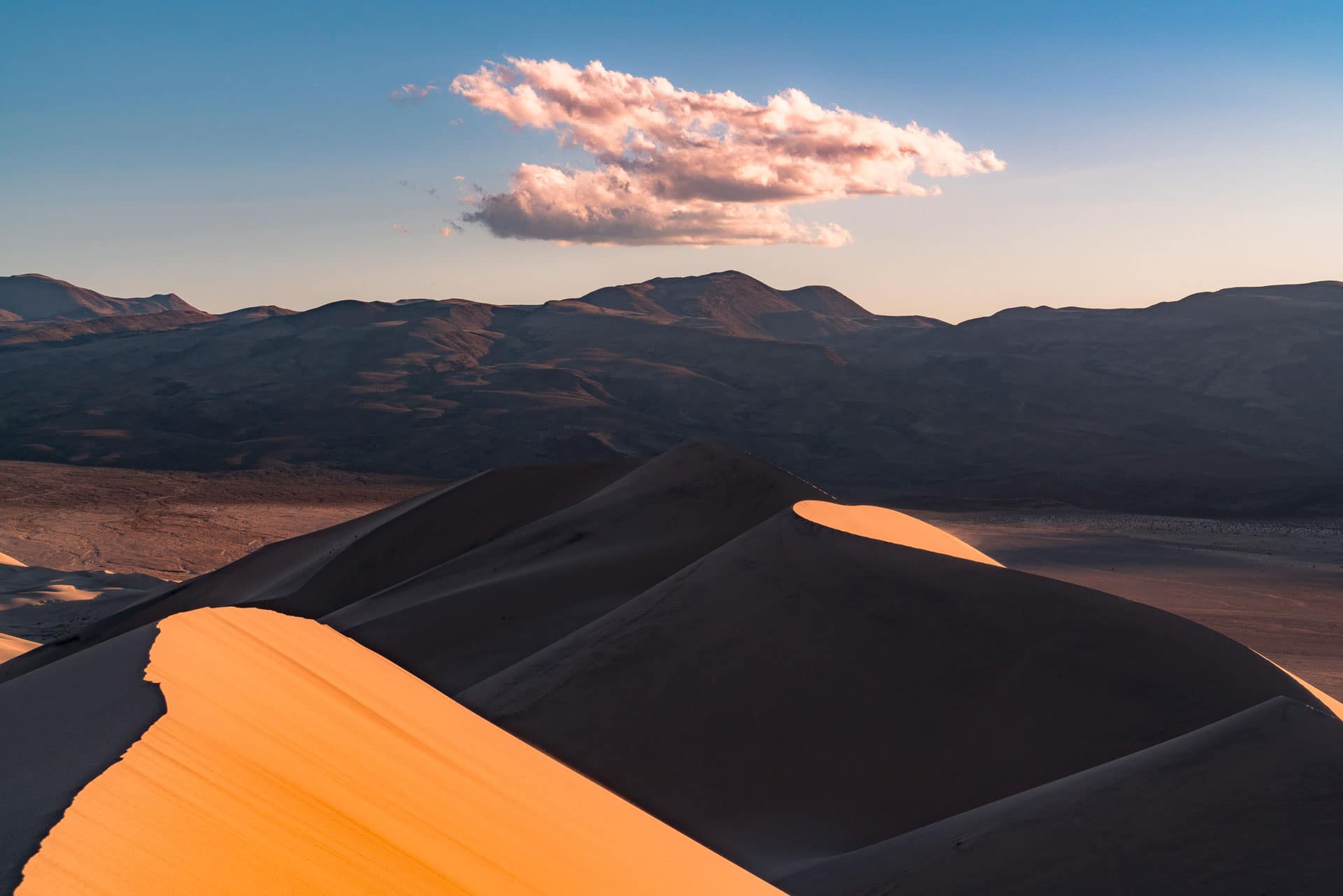
If you are like me, and wrote Death Valley off or moved it to a lower spot on your list due to it’s morbid name or extreme reputation, trust me when I say it’s totally worth the visit.
Let’s get started!
About My Travels to Death Valley National Park
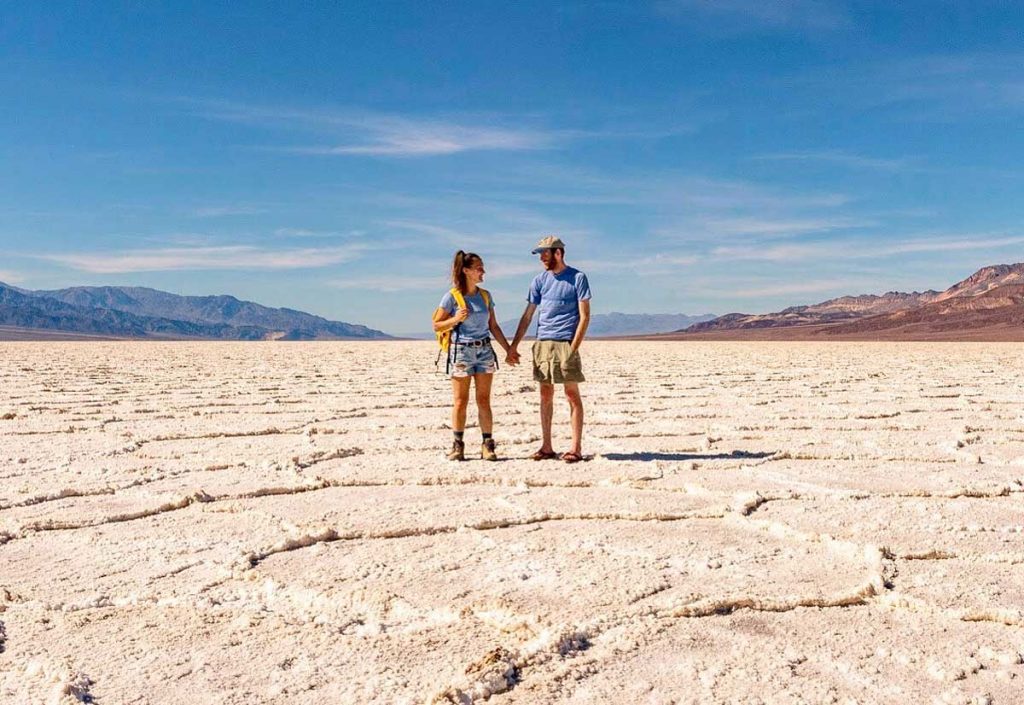
My brother Jim and I first visited Death Valley National Park back in 2013 along with some friends on a road trip from Atlanta to California. We stopped at the park for maybe an hour but I could tell immediately that my impressions of the park were totally off.
Since that trip, I have returned many, many times and even created an award-winning film (see below) on Death Valley. For the film, to capture the essence of the park we took two separate trips and spent a total of nearly 3 weeks in Death Valley.
The first trip was in the Winter and the second was in the Spring. We visited once with a 2WD car and once with a 4WD car (what a difference – more on that below).
Death Valley National Park Guide
Table Of Contents
- About Death Valley
- History of Death Valley National Park
- Death Valley Map
- Directions & Location
- Death Valley Video
- Death Valley Weather & Seasons
- Things to Do in Death Valley
- Death Valley Camping & Lodging
- Death Valley Photos
- Nearby Attractions
About Death Valley National Park

Situated on California’s southeastern border with Nevada, Death Valley National Park spans over 5,000 square miles of otherworldly vistas. The largest national park in the continental United States, Death Valley is a park for superlatives.
Death Valley is the hottest place on earth, the lowest place in North America, and the driest place in the United States. Death Valley is also the largest National Park outside of Alaska.
Things to Know Before You Visit Death Valley
Guide: I highly recommend this one.
Map: I use this one.
Entrance Fees: The fee to enter Death Valley is $30 per vehicle. If you plan on visiting more than 1 national park this year we suggest you go ahead and purchase the America the Beautiful Pass (which can be found at the entrance gates to most national parks or online here).
This pass gets you into all National Parks, Forests, Monuments, and more including 2,000 sites for free after a one time $79 fee.
Sunscreen: For many of us visiting national parks in the summer means lots of sun. Seriously, some of these parks can zap you if you don’t wear sunscreen. We happen to like this one because it works AND it’s not full of a bunch of chemicals.
Leave No Trace: We’re big fans of Leave No Trace, here at MTJP. Want to learn more? Read about the seven principals of Leave No Trace here.
Insect Repellent: You hope not to need it, but you want to have it. We typically bring an Eco-Friendly Insect Repellent with us just in case.
Dogs are not allowed on trails in most national parks due to their potentially disruptive presence with the natural ecosystem. The basic rule is they are allowed where cars can go so be sure to check the rules before bringing along your furry friend.
Details About Death Valley National Park
Location: Furnace Creek, California
Established: October 31, 1994
Size: 3.37 million acres
Native Land: Timbisha Shoshone
Visitors: 1,678,660 (2018)
Entrance Fees: $30 (or $80 for America the Beautiful Pass)
RELATED: 10+ (FASCINATING) Death Valley National Park Facts You Probably Didn’t Know
History of Death Valley
According to the National Park Service, the history of Death Valley goes somewhat like this…
Native Americans & 49ers in Death Valley
The land that is known today as Death Valley National Park was inhabited by Native Americans (most recently the Timbisha Shoshone around 1000AD) prior to the arrival of Europeans. In the mid 1800s trappers and explorers entered the valley on their way to the gold rush in California.
A wagon train group of 49ers (gold seekers) headed to California got lost and ended up in Death Valley. Things got fairly desperate, so much so that they were forced to kill their own oxen and eat the meat for survival.
Eventually the party did make it out of the valley losing only one person along the way, but that was enough. It’s said that upon leaving the valley one member of the group turned around and said the famous words, “Goodbye, Death Valley” and thus a park was named.
Mining Camps in Death Valley

In the late 1800s miners moved into Death Valley looking to exploit the land for its mineral value. The most famous mining operation was that of the Borax works in the park and the famous “twenty mule team borax” named for the number of mules & horses coupled together to haul the loads out of the mines.
Mining would continue to go on in Death Valley for decades to come.
Establishment of Death Valley National Park
On February 11, 1933 President Hoover set aside two million acres of land mostly in California but a small parcel in Nevada as well to create Death Valley National Monument. In the 1930s under the Roosevelt administration, infrastructure was built in the park by Roosevelt’s CCC program.
Controversy over the mines in Death Valley came about in the 1930s onward as conservationists fought to close them down. Finally, on October 31, 1994 the park was signed into law with an additional 1.3 million acres.
If you’re interested in learning more about the history of Death Valley I recommend this excellent book.
Death Valley National Park Map

Where is Death Valley National Park?
Death Valley National Park is located in the southeastern corner of California on (and just over) the Nevada border. The park is situated in the heart of the Mojave Desert.
Getting to Death Valley – Directions & Location
There are a few popular ways to get to Death Valley.
Closest Airport: LAS – McCarran International Airport (distance – 106 miles from the Death Valley Junction Entrance)
The fastest way to get to Death Valley National Park is by plane, flying into Las Vegas’s McCarran International Airport. Flights into Las Vegas are usually inexpensive due to the amount of major airlines that fly into the city from all over the world.
Alternatively you *could* fly into Los Angeles (LAX) and drive east (3.5 hours).
Driving From Las Vegas to Death Valley
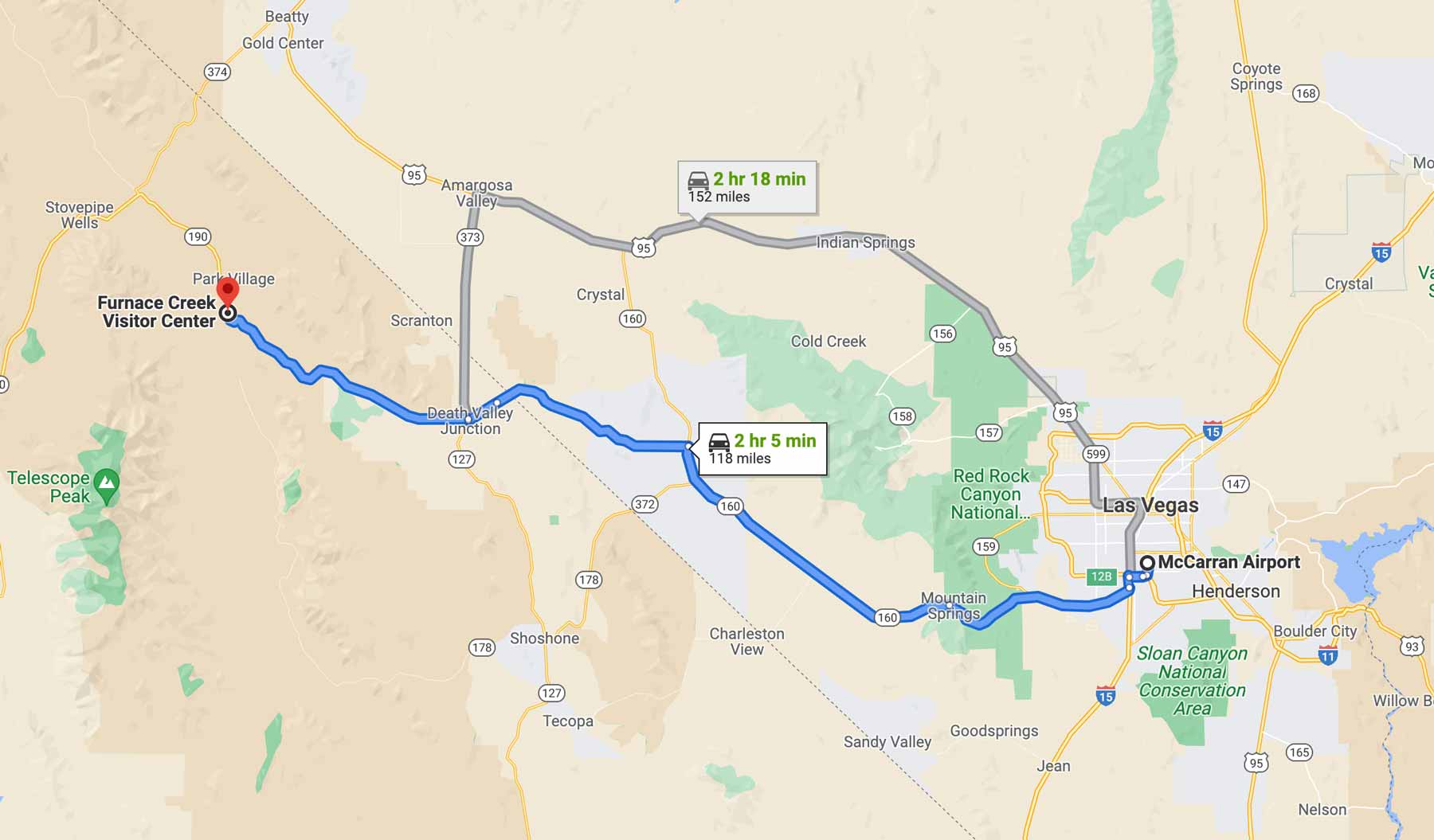
If you are driving from Las Vegas to Death Valley, getting to the park is a breeze. Just jump on highway 160 and take it to Pahrump. From there simply follow the signs the rest of the way.
The drive from Las Vegas to Death Valley is about 2 hours or so depending on where you’re first stop in the park is.
Traffic from Las Vegas to Death Valley isn’t too bad so long as you time your departure from the city right.
On the return trip from Death Valley to Las Vegas you could take an alternate route through Amargosa Valley or Beatty if you’re near Stovepipe Wells.
Death Valley Video
About the Death Valley Video
In the remote far reaches of the Mojave Desert lies the largest national park in the continental United States. Hidden here in the hottest place on earth is another world full of diverse life and colorful landscapes. Join us as we take life to the extreme and explore Death Valley. Filmed primarily in 8K.
To make this film we spent weeks in California’s (& Nevada’s) Death Valley National Park, mostly in February and March when the temperatures are more manageable. We traversed hundreds of miles hiking most of the parks trails to capture the park like never before.
RELATED: 14 BREATHTAKING National Park Videos to Inspire Your Next Trip
Death Valley Seasons & Weather
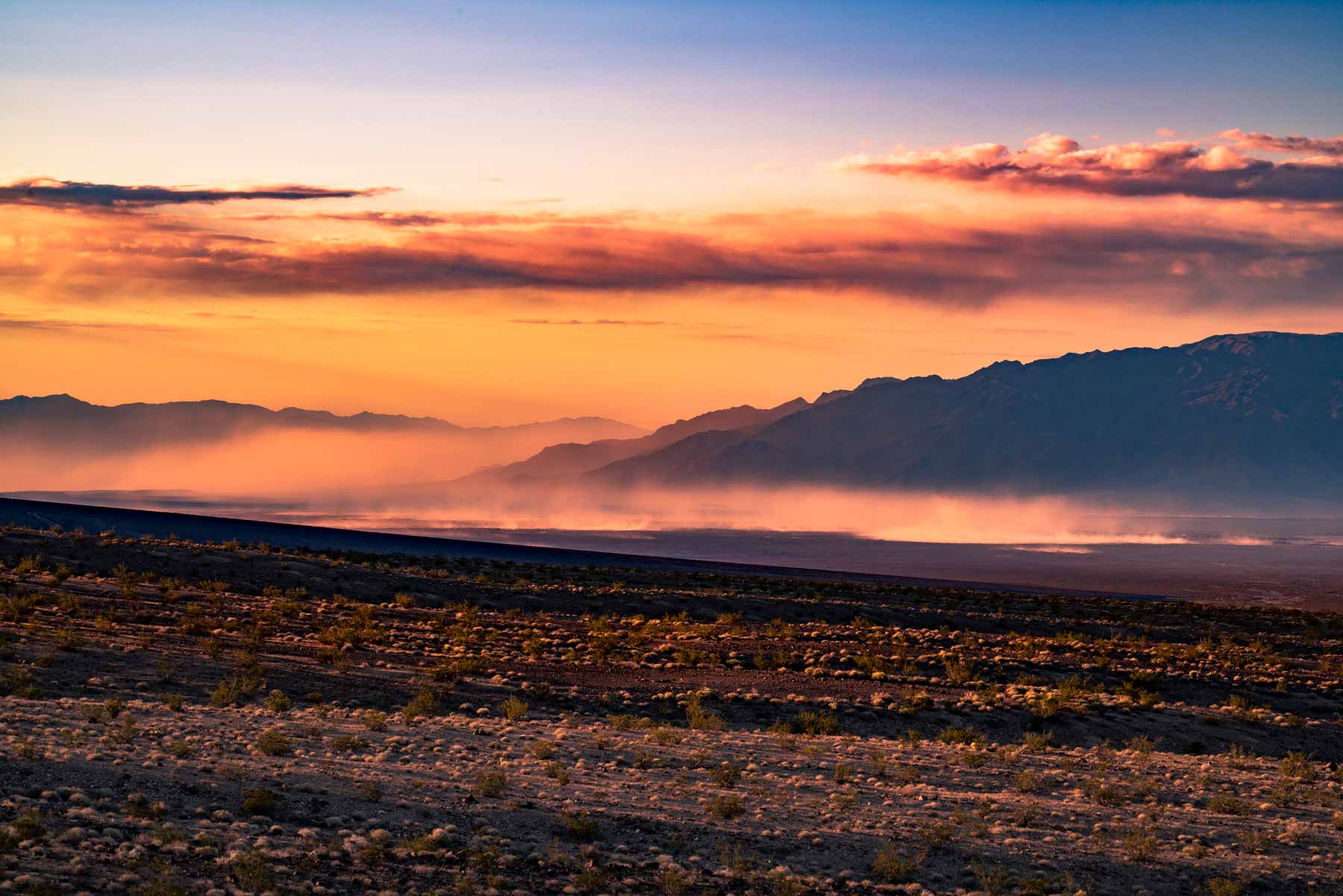
The weather at Death Valley National Park is pretty reliable. You can almost always count on abundant sunshine and warm to extremely hot weather. Clouds are a welcome and somewhat rare sight in this park.
Best Time to Visit Death Valley
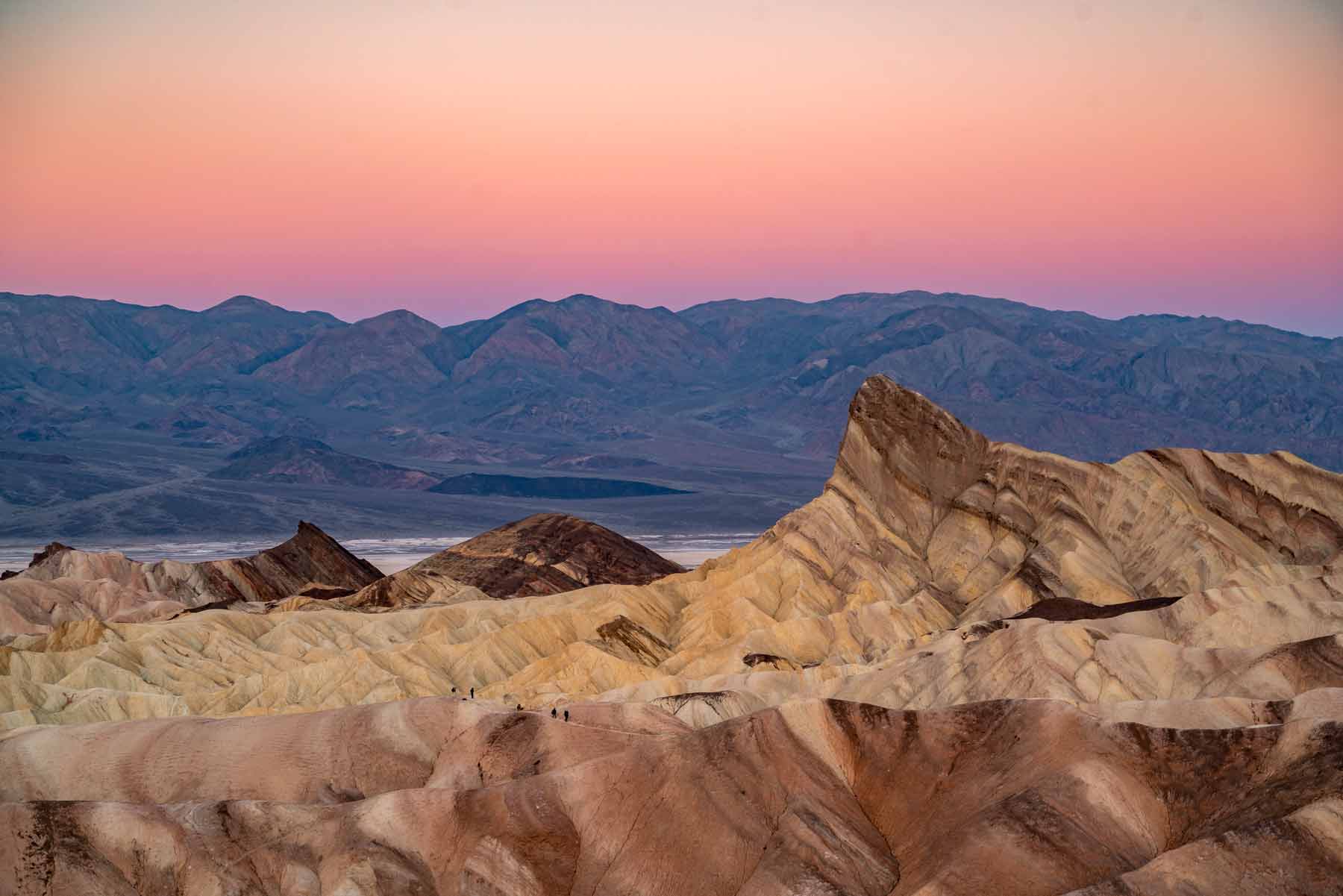
The best time to visit Death Valley National Park is during Winter when the park has sufficiently cooled from the extreme temperatures of Summer.
Winter is a wonderful time to escape the cold weather at home and head to the California desert.
I would recommend visiting anytime between January through April.
RELATED: 16 STUNNING Things To Do in Death Valley
Spring in Death Valley National Park
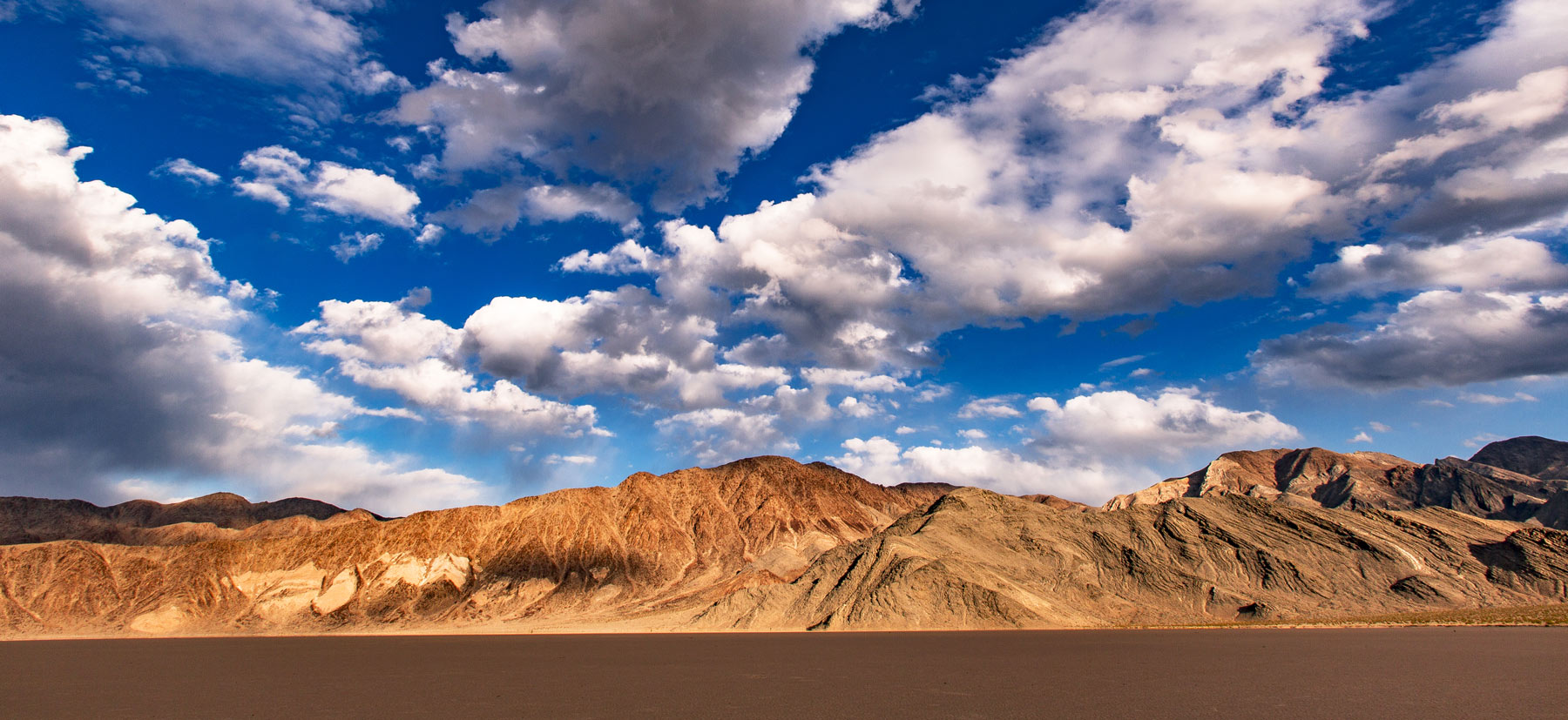
Spring is a great time to visit Death Valley as temperatures are cooler, crowds are lesser (so long as you avoid spring break week), and you can actually find some clouds!
March and April are great months to visit the park. By May the temperatures will be soaring into the triple digits however.
Summer in Death Valley National Park
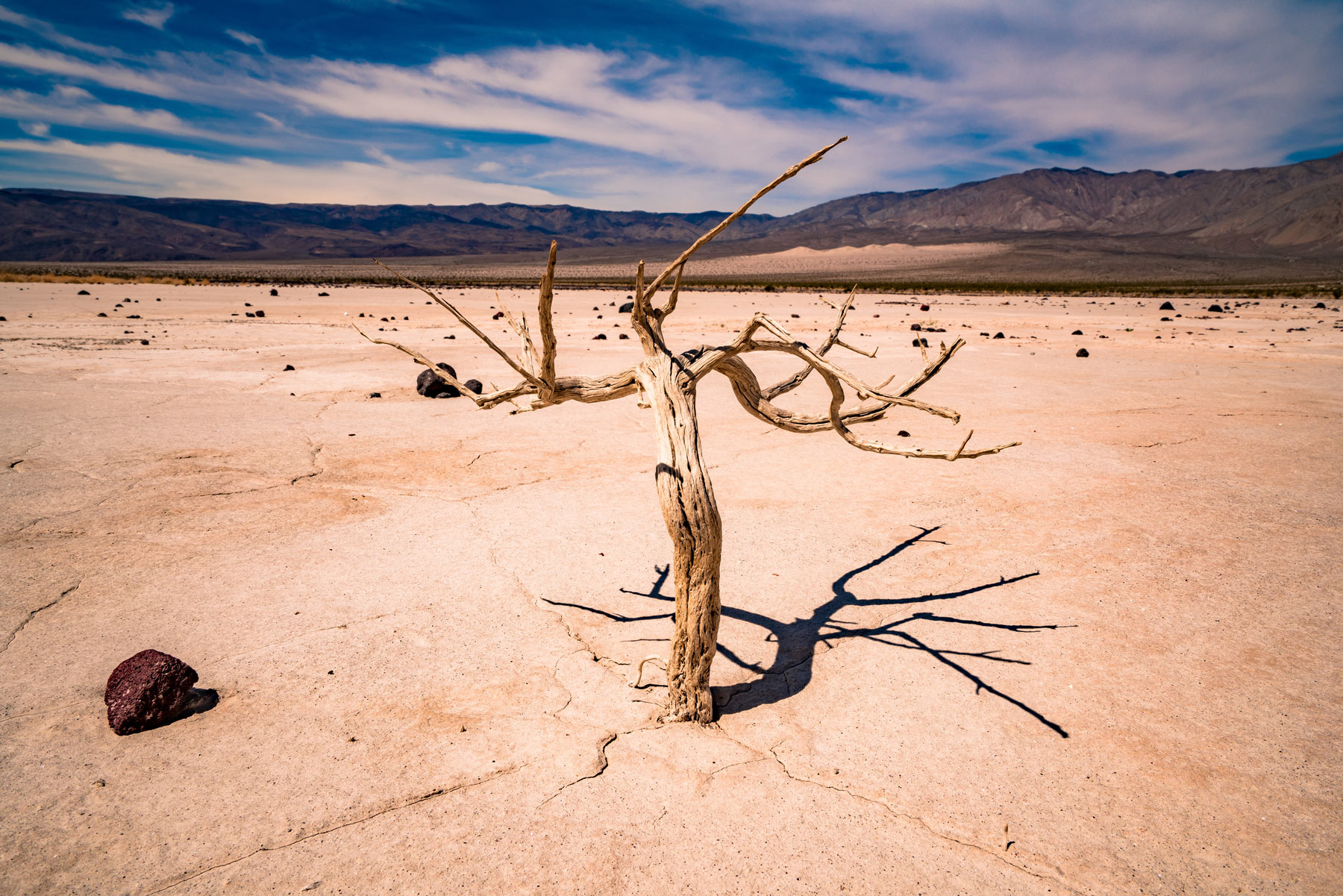
Summer is a time to avoid Death Valley as it is often the hottest place on the planet during this time of year. Temperatures are consistently in the triple digits and have been known to soar into the 130s!
If you visit during Summer (or any other time for that matter) be sure to pack LOTS of water, avoid sun exposure during midday heat, and lather up the sunscreen.
Fall in Death Valley National Park
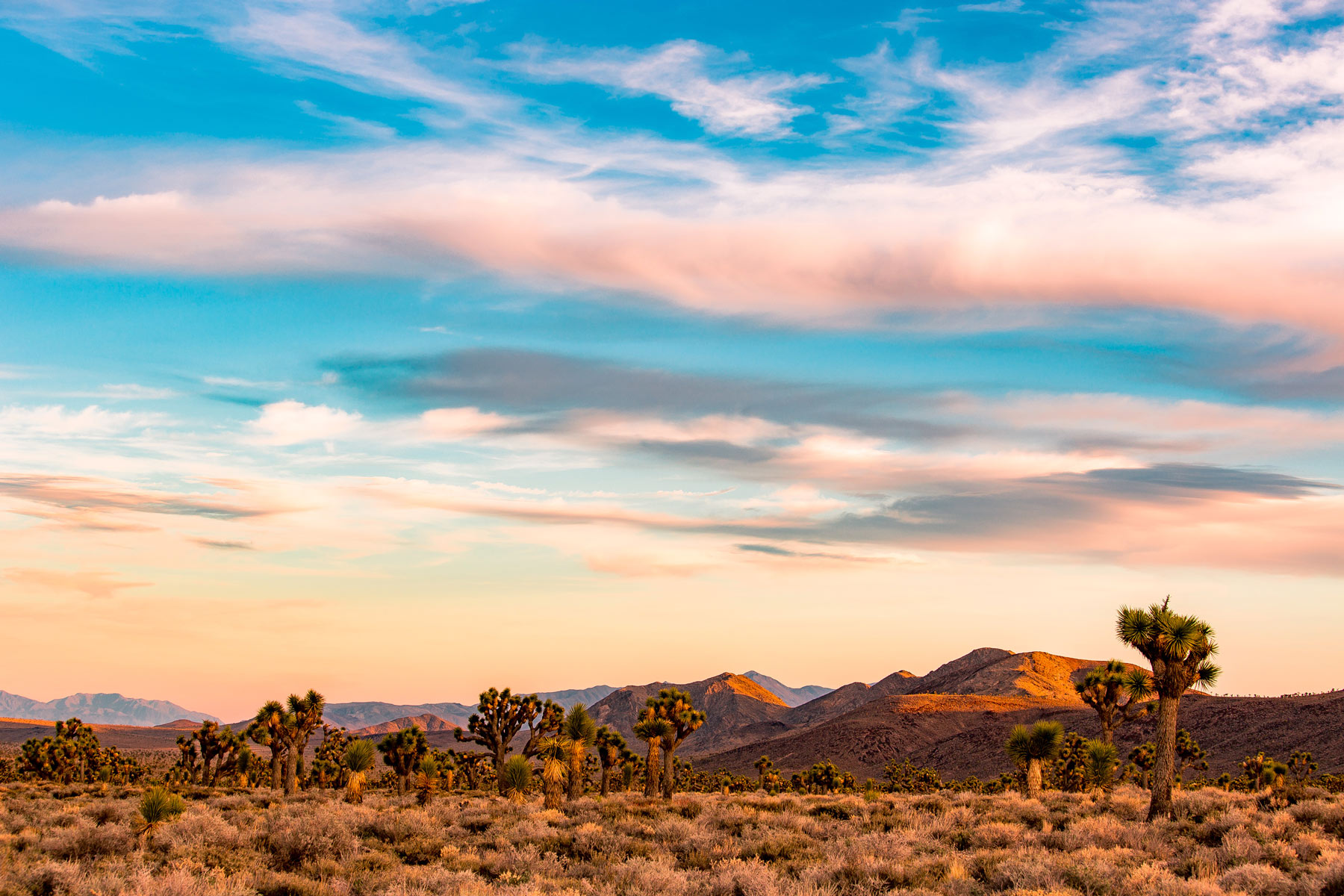
Fall in the Death Valley is nicer than Summer but still hot. Temperatures don’t really start to decrease until November and December.
One of the pros of visiting in the fall is smaller crowds due to the shoulder season.
RELATED: 10+ Must See National Parks This Fall (A Stunning Guide)
Winter in Death Valley National Park

Winter is the best time to visit Death Valley. Nights can actually be cold (yay) but daytime temperatures are still warm and sometimes hot. My favorite months to visit the park are February and March because of these reasons.
Visitation is also not too crazy during this time and you’ll have many areas all to yourself. Winter is a great time to escape a cold destination for a warm one like Death Valley.
Fun Fact: Death Valley actually sees snow every year. The park not only encompasses the valley floor but the mountains on either side. Telescope Peak sees snow each winter.
Best Things to Do in Death Valley National Park
For a full list of the best things to do in Death Valley check out our article: 25 STUNNING Things to Do in Death Valley National Park
1. Catch a Sunrise at Zabriskie Point
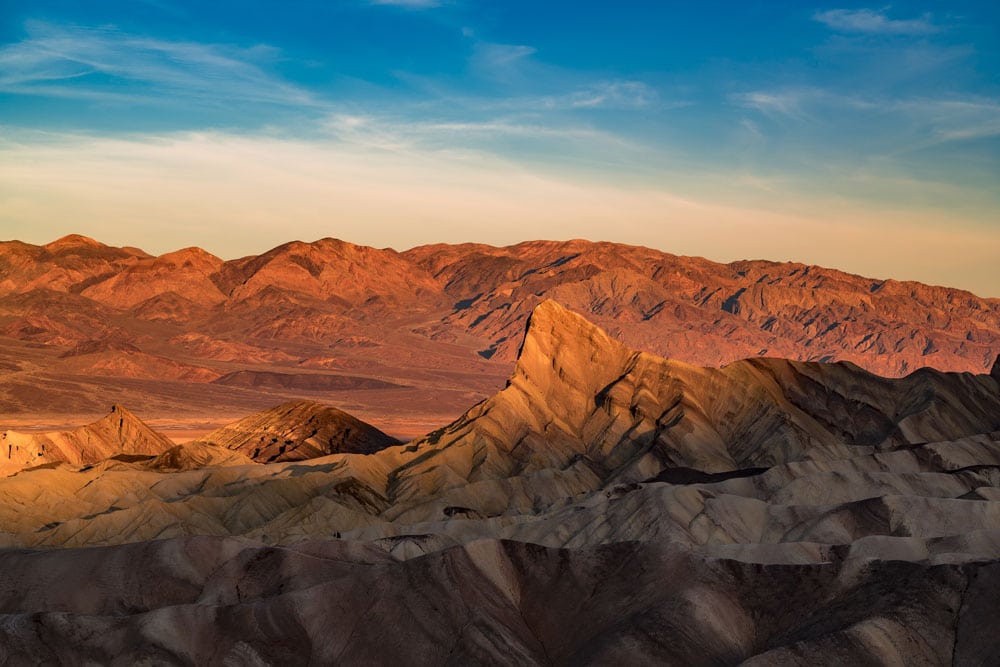
One of the most spectacular sunrises in the entire National Park system can be witnessed every morning from Zabriskie Point in Death Valley National Park.
Watch the sun dance across layer after layer of a seemingly endless desert landscape. Any sunrise from here is a true sight to behold but occasionally the cloud conditions are just right to not only light up the foreground but the sky as well.
Read more about Zabriskie Point here.
2. Hike Eureka Dunes (or any of the other dune fields!)
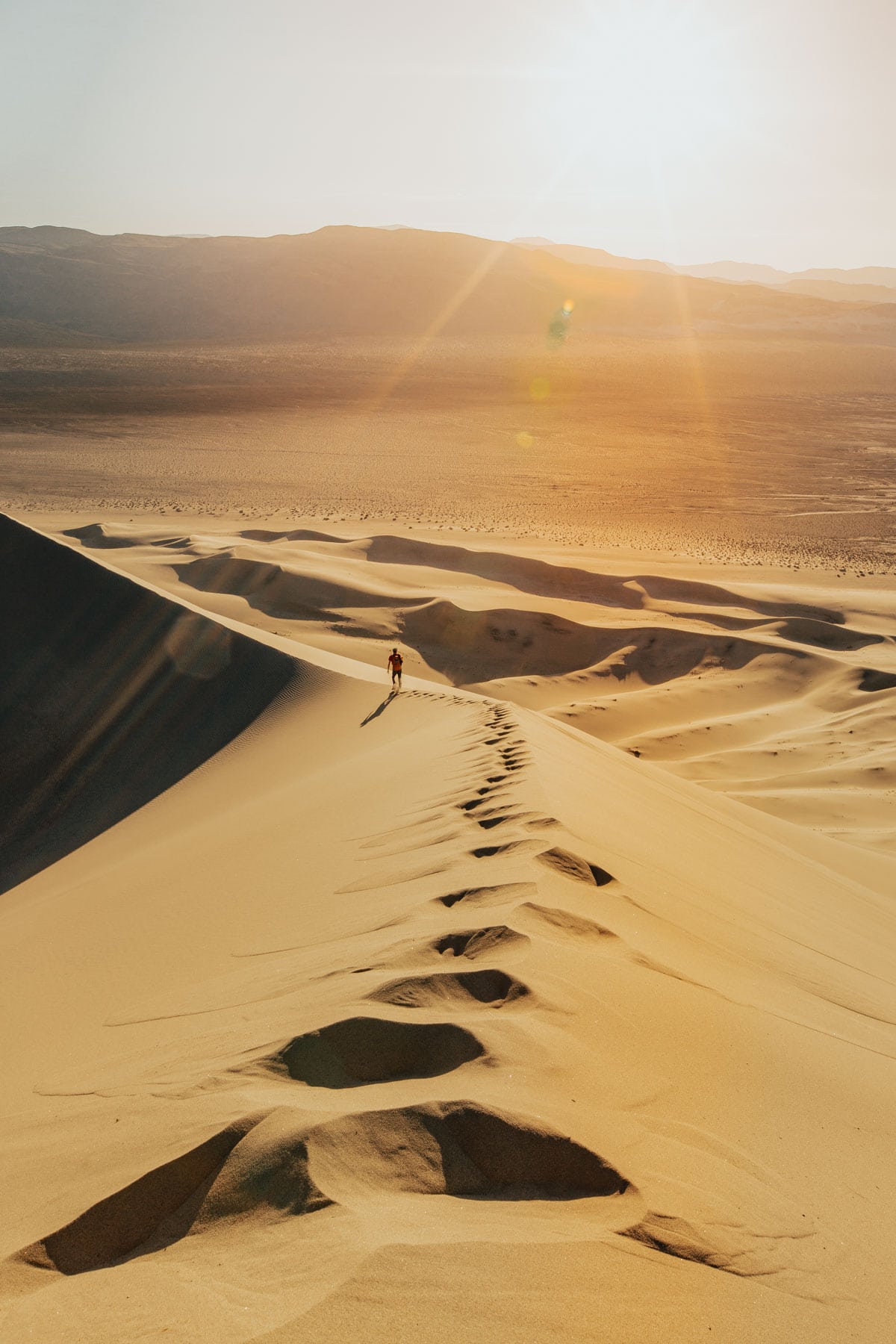
Death Valley has 5 separate dune fields and each one is unique. Of these Mesquite Dunes are the easiest to access and the most visited. Eureka Dunes on the northern end of the park are among the tallest in North America and our favorite.
Ibex Dunes are on the southern end of the park and feature a cool abandoned mine. Panamint Dunes are mostly viewed from afar but can provide for a secluded experience. Saline Dunes are the least visited and most remote in the park.
Read more about Eureka Dunes here.
3. Go Stargazing From One of America’s Darkest Skies
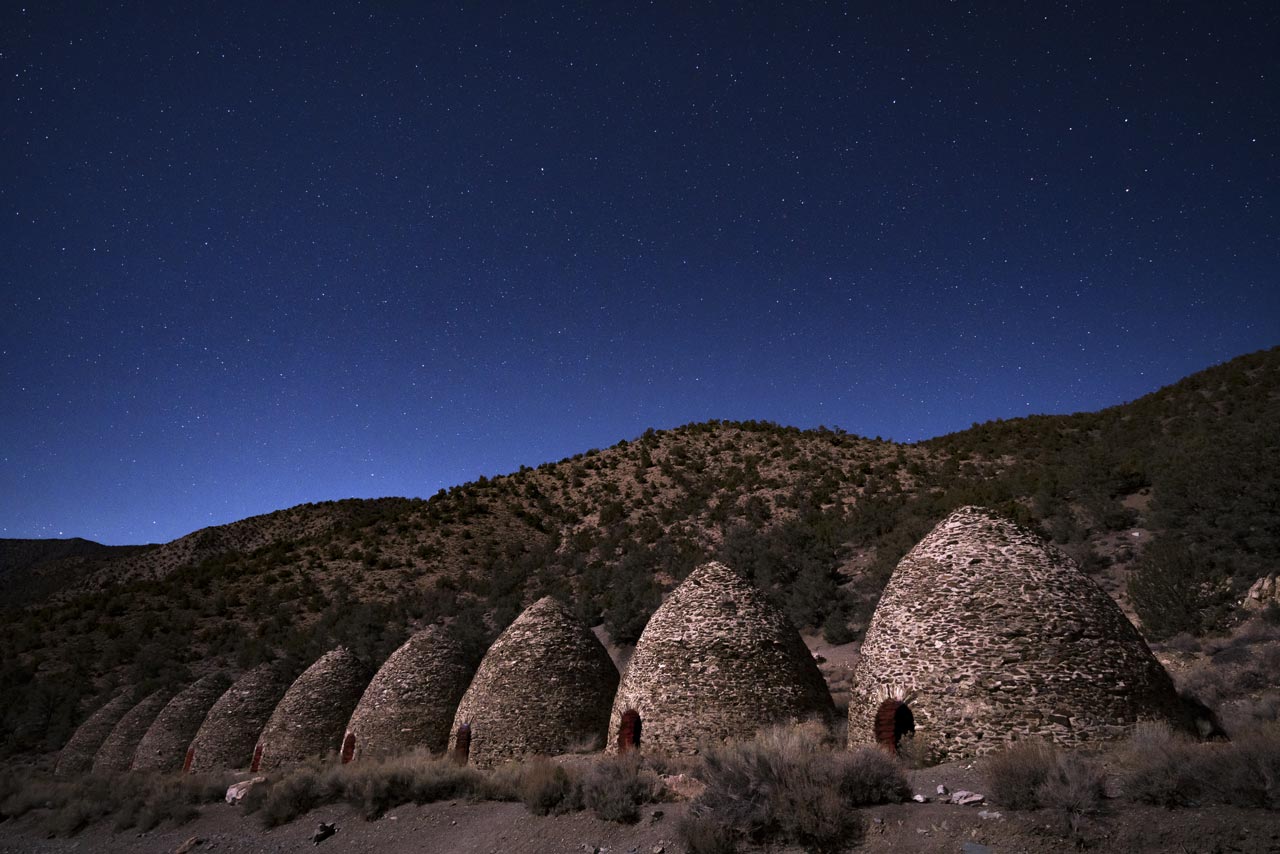
Death Valley is home to some of the darkest skies in North America making it one of the best places to see the stars. It has even been declared an international dark sky park.
We recommend finding a secluded spot, rolling out a blanket, and looking skyward.
4. Experience the Lowest Point in North America
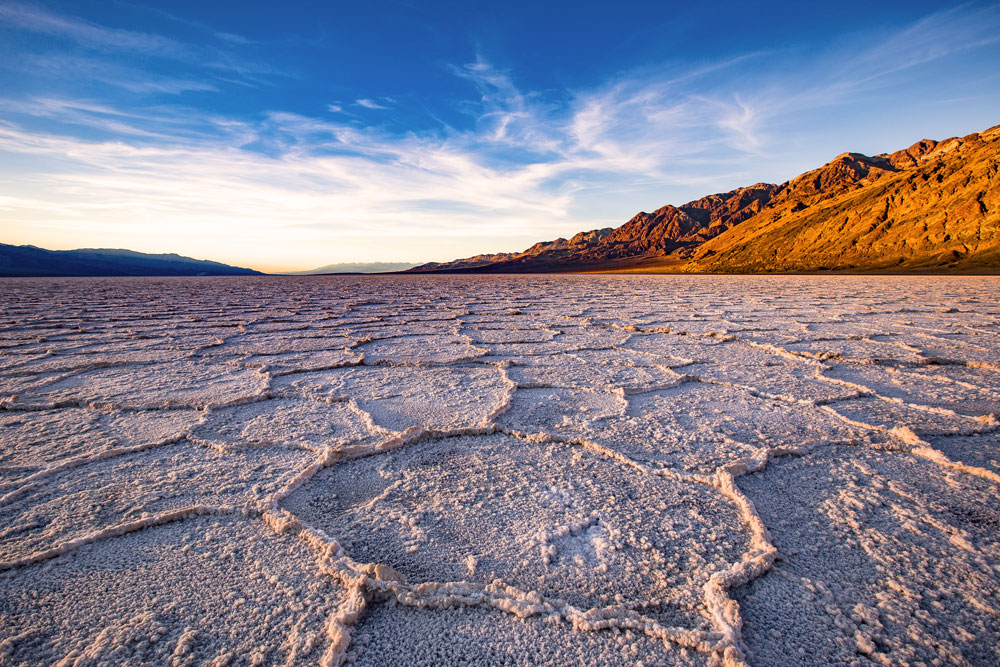
Badwater Basin is the lowest point in North America and reaches a staggering depth of 282 feet below sea level! The ground here is covered in thick chunks of salt laid out in mesmerizing geometric formations.
Make sure to lather up the sunscreen and bring sunglasses on a visit to Badwater Basin as the brilliant white salt combined with the baking hot sun is a recipe for gnarly sunburns.
Read more about Badwater Basin here.
5. Discover the Mysterious Rocks at Racetrack Playa
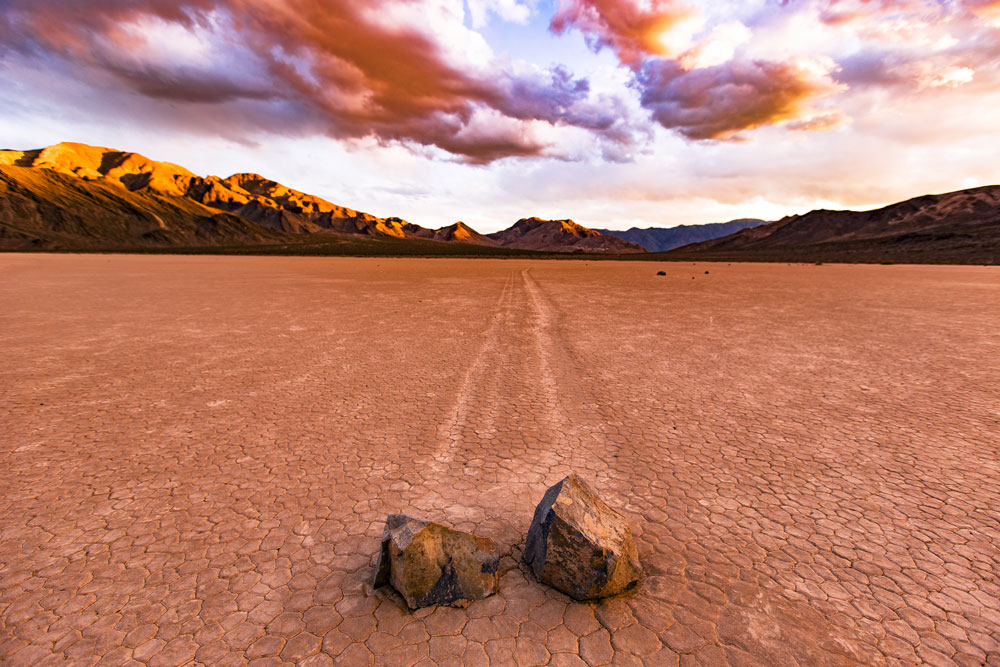
The Racetrack Playa is one of the most famous National Park sites in the world and also one of the most mysterious. Up until recently no one knew how, when, or why these rocks moved across the desert floor leaving tracks behind.
Now scientists think they have it figured out, but the spectacle is still a must see. Getting here can be a bit tricky as a high clearance vehicle is a must to reach racetrack playa.
Read more about Racetrack Playa here.
6. Explore the Lee Flat Joshua Tree Forest

When most folks think about the park for Joshua Trees, Joshua Tree National Park is the one that comes to mind. Well, it turns out Death Valley has massive Joshua Tree forests.
Perhaps none of them are as large as the Lee Flat Joshua Tree Forest located near the west entrance to the park.
The best time to visit Lee Flat Joshua Tree Forest is around sunset to watch the light sweep across the landscape. With that being said, sunrise is also a great time as the sun rises from across the valley. Another great time is at night to watch the dazzling night sky
Read more about Lee Flat Joshua Tree Forest here.
7. See the Kaleidoscopic Colors of Artists Palette
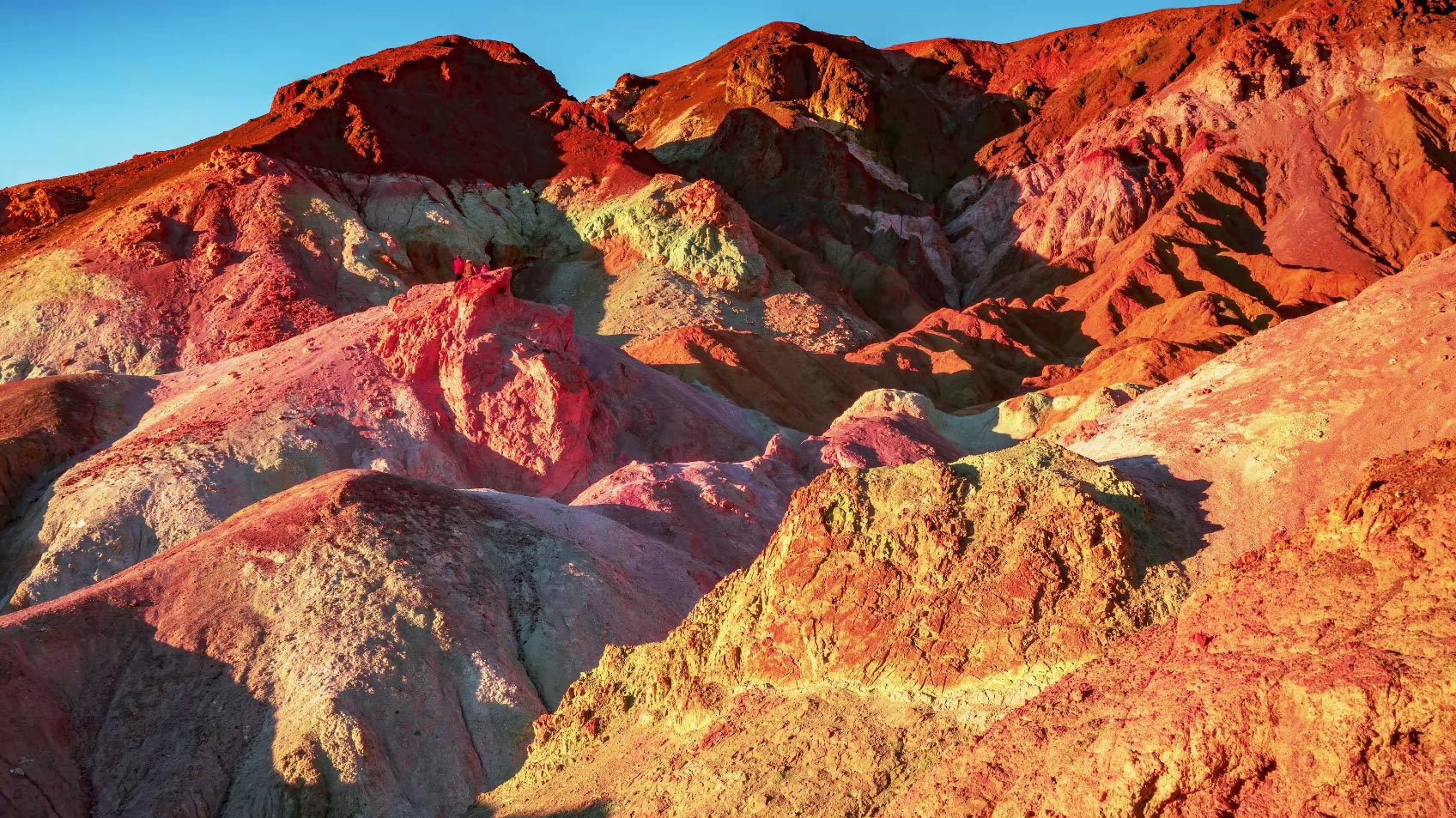
Artists Palette is one of the most otherworldly parts of an otherworldly park. This area is especially beautiful during sunset as the light really brings out the color of the rocks.
Midday is not a good time to visit this area as the colors will be washed out by the sun. The only exception is if it’s overcast. Overcast days are perfect for seeing Artists Palette.
Read more about Artists Palette here.
Where to Stay in Death Valley
Camping & Campgrounds in Death Valley
Death Valley National Park is home to 12 campgrounds and over 700 campsites offering a wide variety of camping options from campgrounds with over 200 sites to remote backcountry wilderness.
Death Valley Campsites
Sunset Campground Death Valley
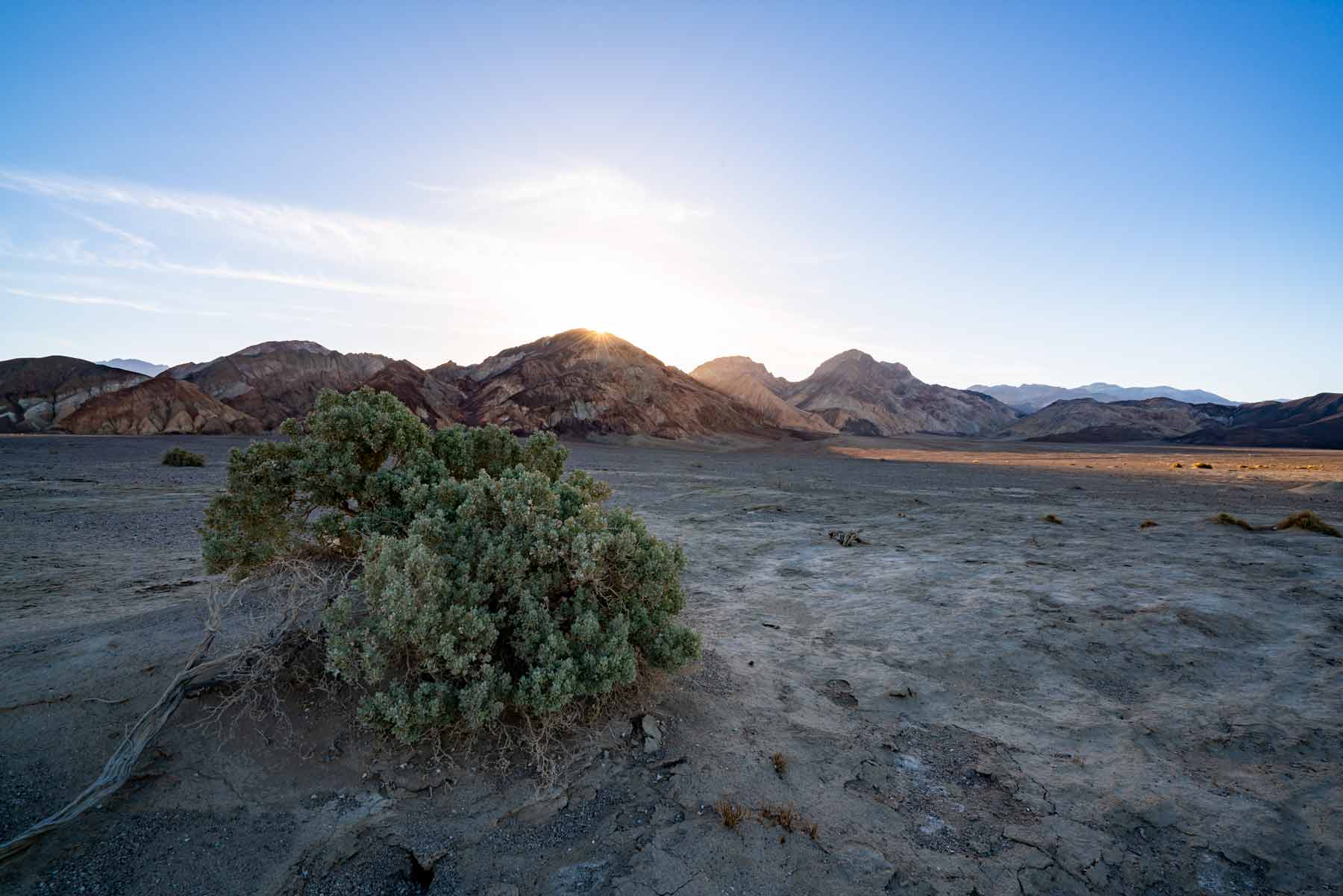
- 270 sites
- Late Fall-Early Spring
- Standard $14
- First-come, First-Serve
Located in Furnace Creek, Sunset Campground doesn’t offer much to see but has plenty of space at affordable rates. This “campground” is a gravel lot separated by chalk lines. Sunset Campground is a pretty lousy spot for tent campers but perfect for trailers or RVs.
The campground is centrally located near Artist’s Palette, Golden Throne, Zabriskie Point, a convenience store, and more.
One thing to note is the campground is at sea level and temps can (and do) soar. Furnace Creek has the record for hottest recorded air temperature on the planet so if you need cool air to sleep this might not be the place for you in warmer months.
Stovepipe Wells Campground Death Valley
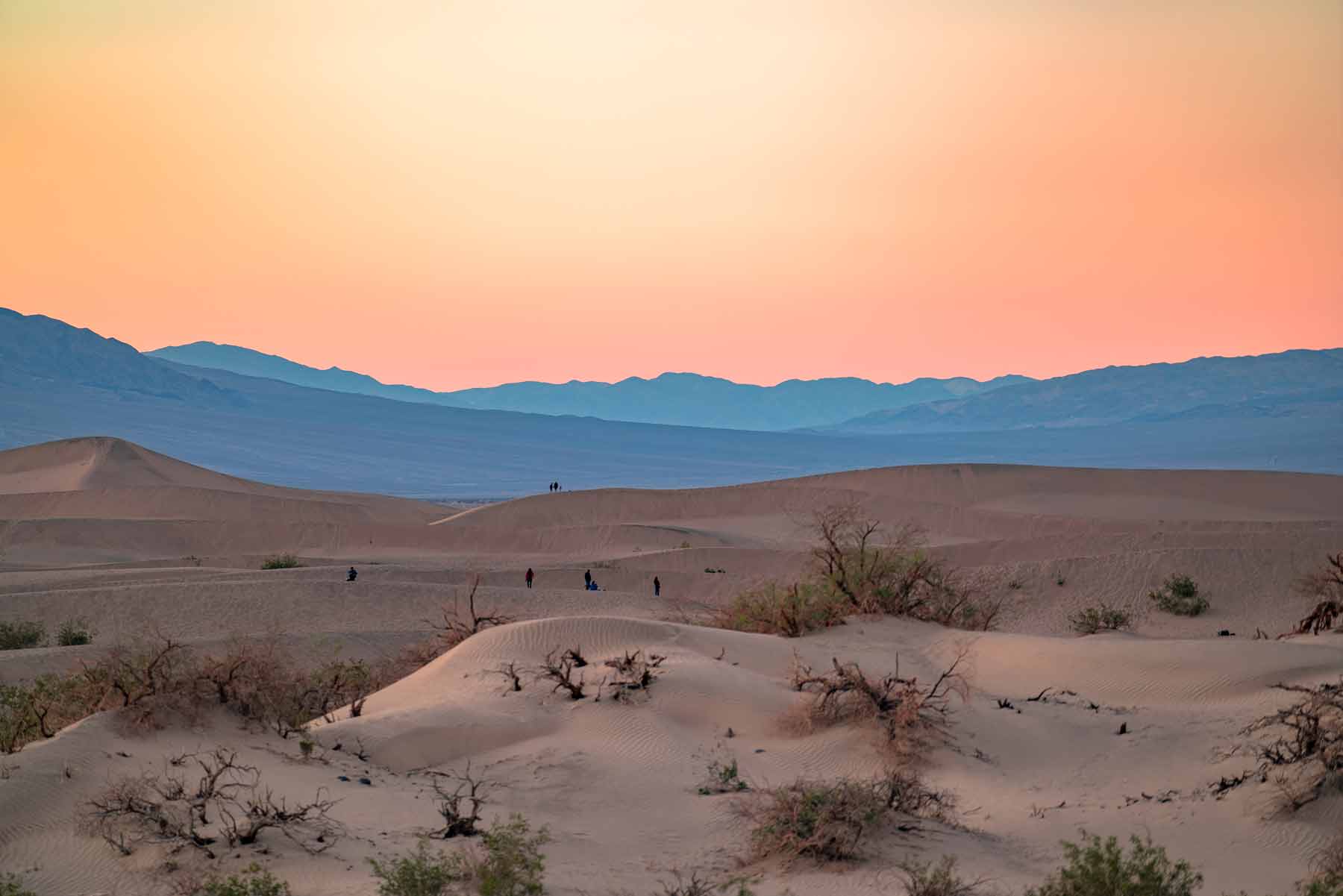
- 190 sites
- Late Fall-Early Spring
- Standard $14
- First-come, First-Serve
Stovepipe Wells is the first stop for many park visitors. The campground here is a pretty basic featuring some fairly stripped down Death Valley campsites rocky, dirt plot with little to no privacy. Most sites feature a fire pit and picnic table.
What the campground lacks in natural amenities, the surrounding area more than compensates for. Restrooms are maintained well-enough, above average for a national park.
The campground is located near popular spots like Mesquite Flat Dunes, Devil’s Cornfield, and the most popular convenience store in Death Valley.
Furnace Creek Campground Death Valley
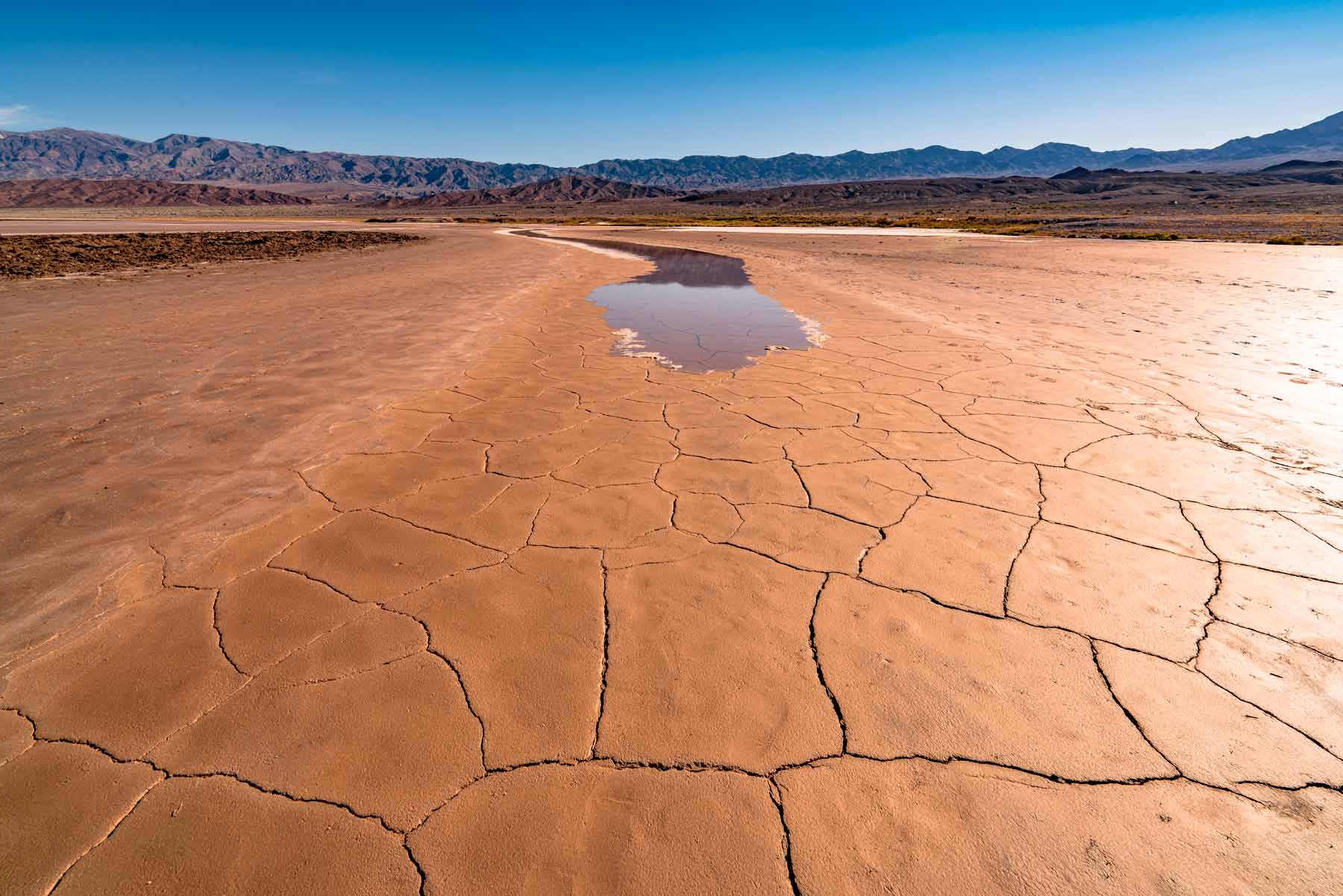
- 136 sites / 18 hookups
- Year Round
- Standard $22 / Hookups $36
- Reservations Oct 15 – Apr15
Furnace Creek Campground has some of Death Valley’s best campsites offers large sites, desert scenery, and is well-maintained. Most sites feature a fire pit and picnic table. What more do you need? Restrooms are maintained well-enough and have running water.
The location of the campground is tough to beat near Artist’s Palette, Golden Throne, Zabriskie Point and more.
One thing to note is the campground is at sea level and temps can (and do) soar. Furnace Creek has the record for hottest recorded air temperature on the planet so if you need cool air to sleep this might not be the place for you in warmer months. Site also features 18 hookups.
Texas Springs Campground Death Valley
- 92 sites
- Late Fall-Early Spring
- Standard $16
- First-come, First-Serve
Texas Springs Campground features dirt plots, close quarters, and sweeping views. All the basics are here including fire pit, picnic table, and restrooms.
Texas Springs is located in the Furnace Creek section of the park near Golden Throne, Artist’s Palette, Badwater Basin, Zabriskie Point, and more.
Mesquite Spring Campground Death Valley
- 30 sites
- Year Round
- Standard $14
- First-come, First-serve
If you go to the parks for a more secluded experience (like us) Mesquite Spring is probably more your pace. Mesquite Spring is a basic campground with far fewer sites than the bigger, more popular campgrounds like Stovepipe Wells or Furnace Creek. Each site features a fire pit & picnic table.
Flush toilets are a plush feature here. Mesquite Spring Campground is located near Ubehebe Crater, Scotty’s Castle, on the northern side of the park. It makes for a god base camp if you’re trying to make it to Eureka Dunes or the Racetrack Playa.
Wildrose Campground Death Valley
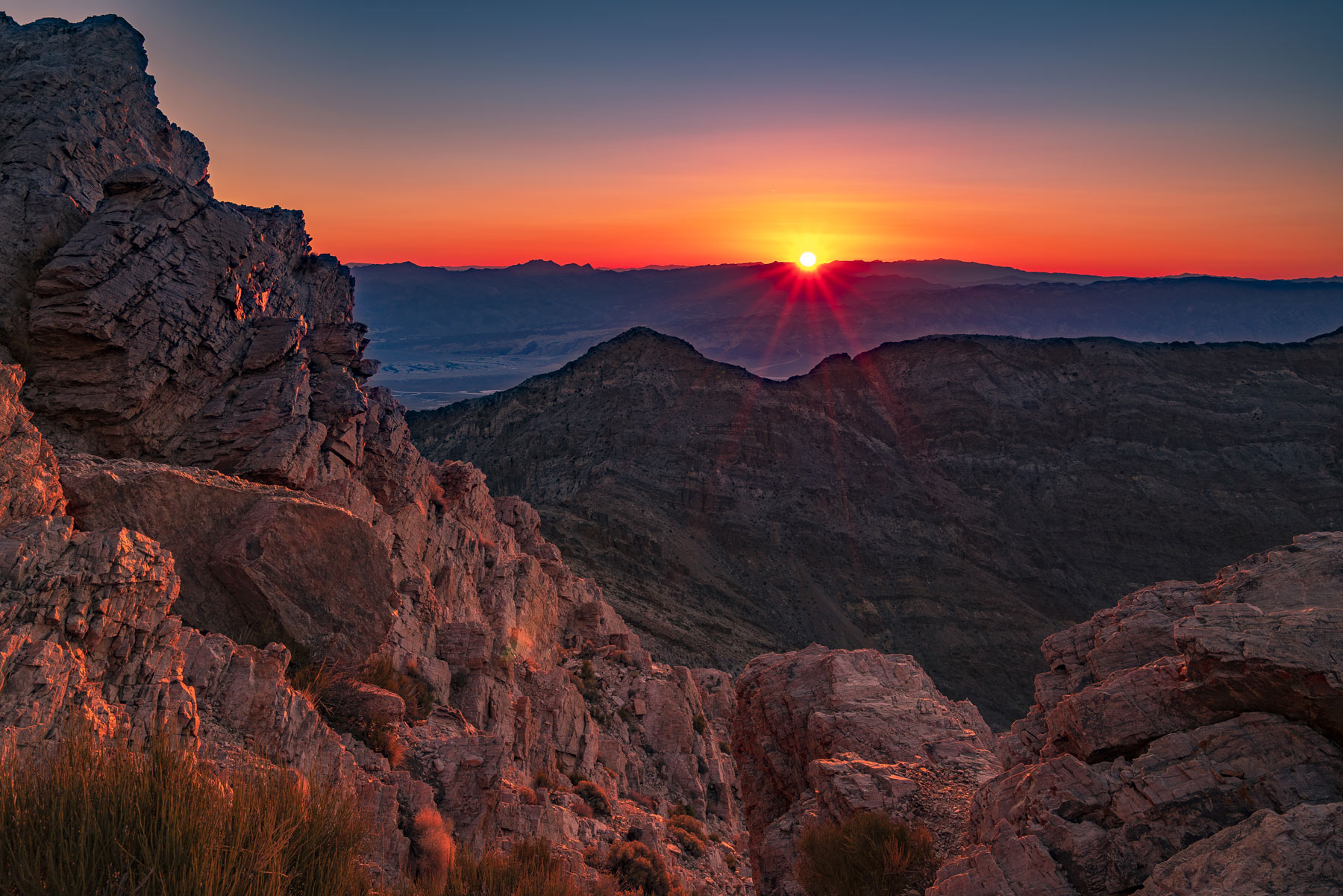
- 23 sites
- Year Round
- FREE
- First-come, First-Serve
If you’re taking a multi-day camping trip to Death Valley then Wildrose Campground deserves consideration. It’s location on a Western end of the park makes it a bit out of the way for most visitors, maybe that’s why it’s free?
As compared to most camp sites in the park, Wildrose sites feature vegetation and considerably more distance between neighbors along with fire pits & picnic tables.
Down the road from Wildrose Campground are the charcoal kilns, and the trailhead to Bennett & Telescope Peaks which offer some of the best views of the entire park. Depending on the time of year snow can be found on the trail.
Emigrant Campground Death Valley
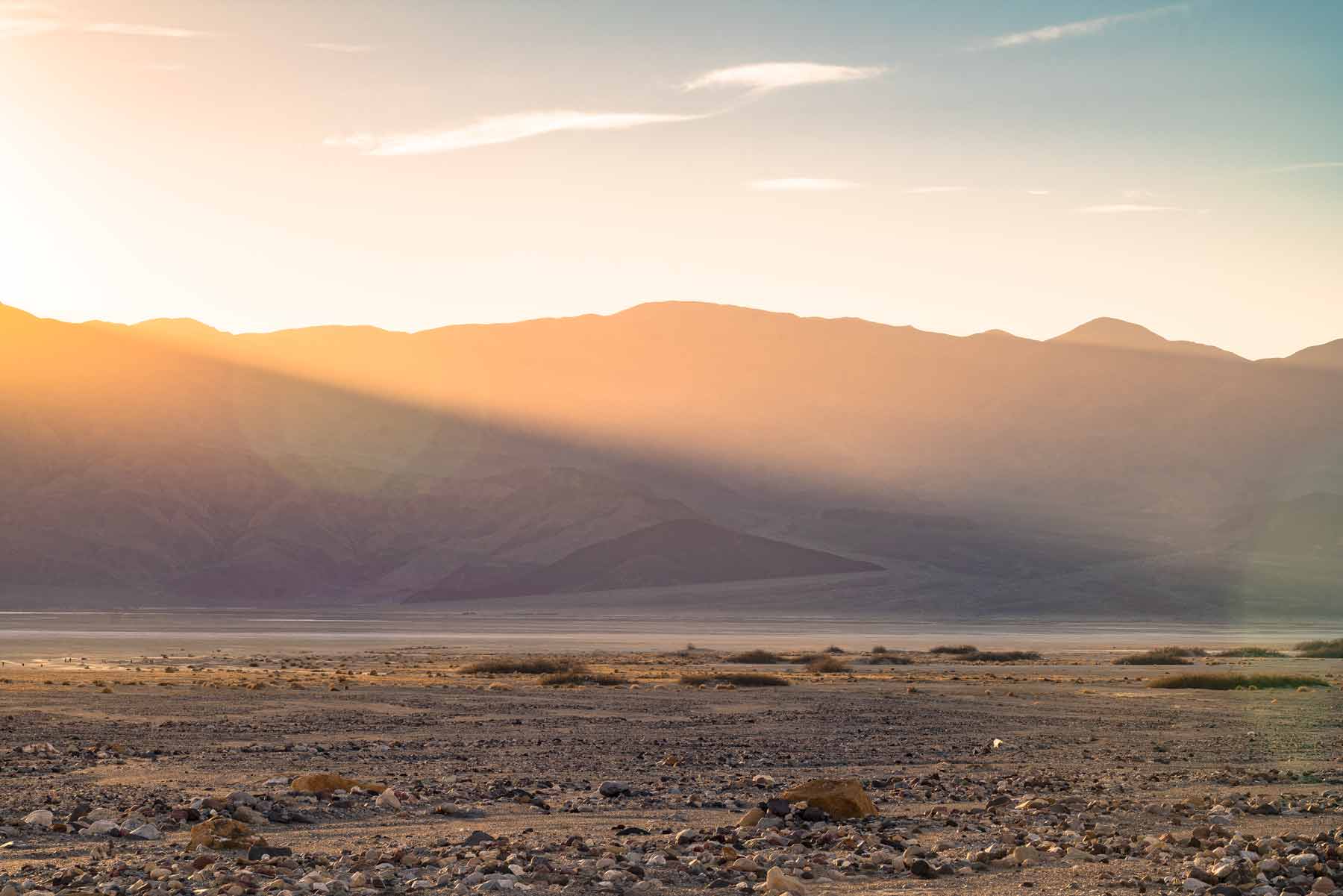
- 10 sites (tent only)
- Year Round
- FREE
- First-come, First-serve
It’s easy to mistake Emigrant Campground as a rest stop from the road as it doesn’t look like much but the price is right. This free campground sits about 100ft off a main road and has no shade or natural barriers of any kind. Each site comes with picnic table, fire pit, and very little distance from the next site over.
The campground technically doesn’t have it’s own bathroom but an actual rest stop with bathrooms is a two-minute walk away. It’s location adjacent to beginning of Emigrant Canyon road puts it in between Panamint Springs, Wildrose, and Stovepipe Wells.
Mahogany Flat Campground Death Valley
- 10 sites
- Late Spring – Fall
- FREE
- First-come, First-Serve
Mahogany Flat Campground is a bit of an anomaly in Death Valley National Park. Whereas most campgrounds are located close to sea level, this campground sits at an elevation of 8200ft making it a much cooler spot.
From Badwater Basin to this campground one must climb a mile and a half in elevation. Situated amongst a grove of conifers camp sites are quite lovely coming with the standard fire pit & picnic table. Toilets are of the pit variety.
This campground is located at the trailhead for Telescope Peak near the Wildrose area and offers some incredible views of Death Valley.
NOTE: You will most likely need a high clearance vehicle to access this campground as the road can be quite rough.
Thorndike Campground Death Valley
- 6 sites
- Late Spring – Fall
- FREE
- First-come, First-serve
Thorndike Campground is very similar to its nearby neighbor, Mahogany Flat Campground, in that it is off the same road, sits at high elevation (7400ft), and is situated amongst a conifer grove.
Thorndike is much cooler than most Death Valley campgrounds so come prepared. Sites come with fire pit, picnic table, and some even a grill. Toilets are of the pit variety.
NOTE: you will most likely need a high clearance vehicle to access this campground as the road can be quite rough.
Death Valley Lodging
Death Valley is a massive park with a whole host of lodging options including one of the most beautiful resorts within a National Park. We’ve linked many of the most popular ones below.
Hotel options inside Death Valley include:
- The Oasis at Death Valley (Furnace Creek)
- The Inn at Death Valley (Furnace Creek)
- Panamint Springs Resort
- Stovepipe Wells Village Hotel
Where to Eat in Death Valley – Restaurants & Food Options
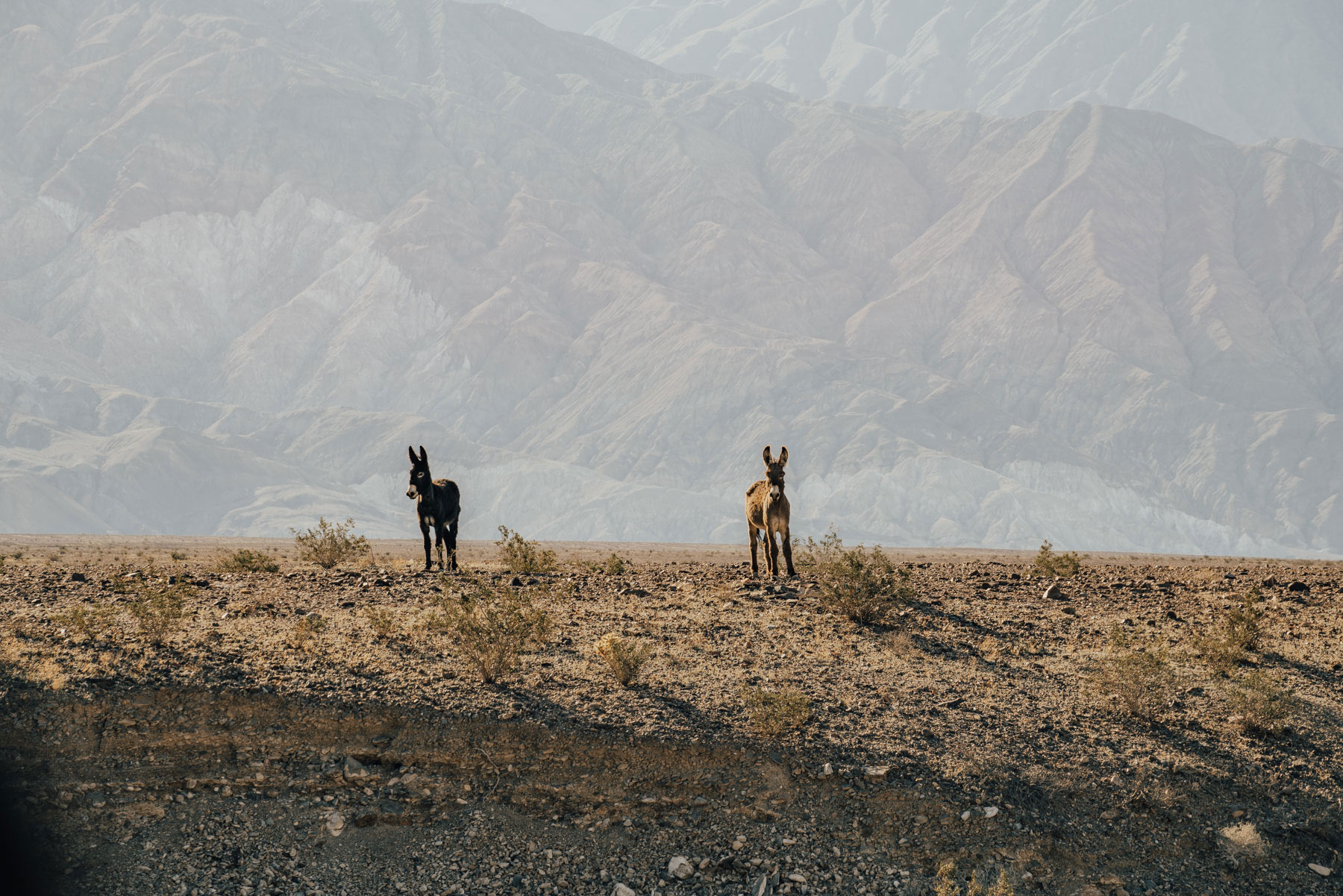
Despite being the largest national park outside of Alaska, Death Valley has relatively few dining options. If you’re coming to the park we recommended you bring food with you. However, there are a few restaurant & general store options in Death Valley albeit few and far between.
Death Valley Restaurants
- Stovepipe Wells General Store
- The Inn Restaurant (Furnace Creek)
- Toll Road Restaurant (Stovepipe Wells)
- Date Grove Diner (Furnace Creek)
- Badwater Saloon (Stovepipe Wells)
- Panamint Springs Resort Dining Bar
- Panamint Springs General Store
Driving in Death Valley National Park
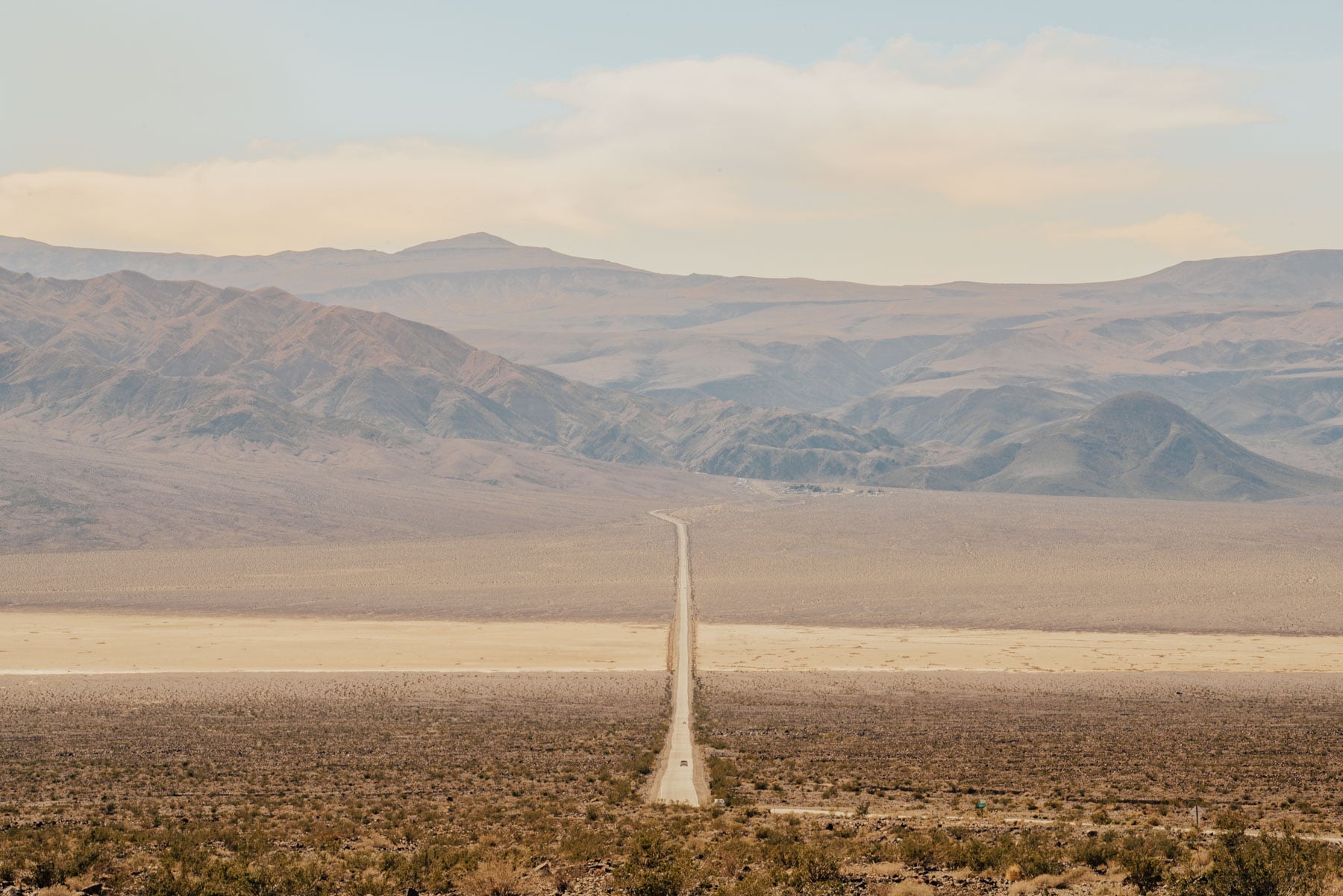
Driving around Death Valley National Park can be a whole lot of fun…if you’re prepared. Death Valley is the largest National Park outside of Alaska. Drive times between locations can be quite long.
For example, if you were to drive from The Racetrack Playa on the north end of the park to Ibex Dunes on the south side, the estimated drive time is upwards of 5 hours.
Some folks will tell you the only way to get around the park is with a 4WD or high clearance vehicle. While that’s not true having 4WD certainly gives you way more options.
Fueling up in Death Valley

Gassing up your vehicle is a good news/bad news sort of deal in Death Valley National Park.
Good news, there are gas stations inside of the park, three of them to be exact. Stovepipe Wells, Panamint Springs, and Furnace Creek all have gas stations with general stores.
Bad news, gas is wildly expensive in the park. Expect to pay a hefty premium for filling up in Death Valley Of these, the cheapest is usually Stovepipe Wells followed by Furnace Creek with Panamint Springs being the most expensive.
What sort of transportation options are available in death valley?
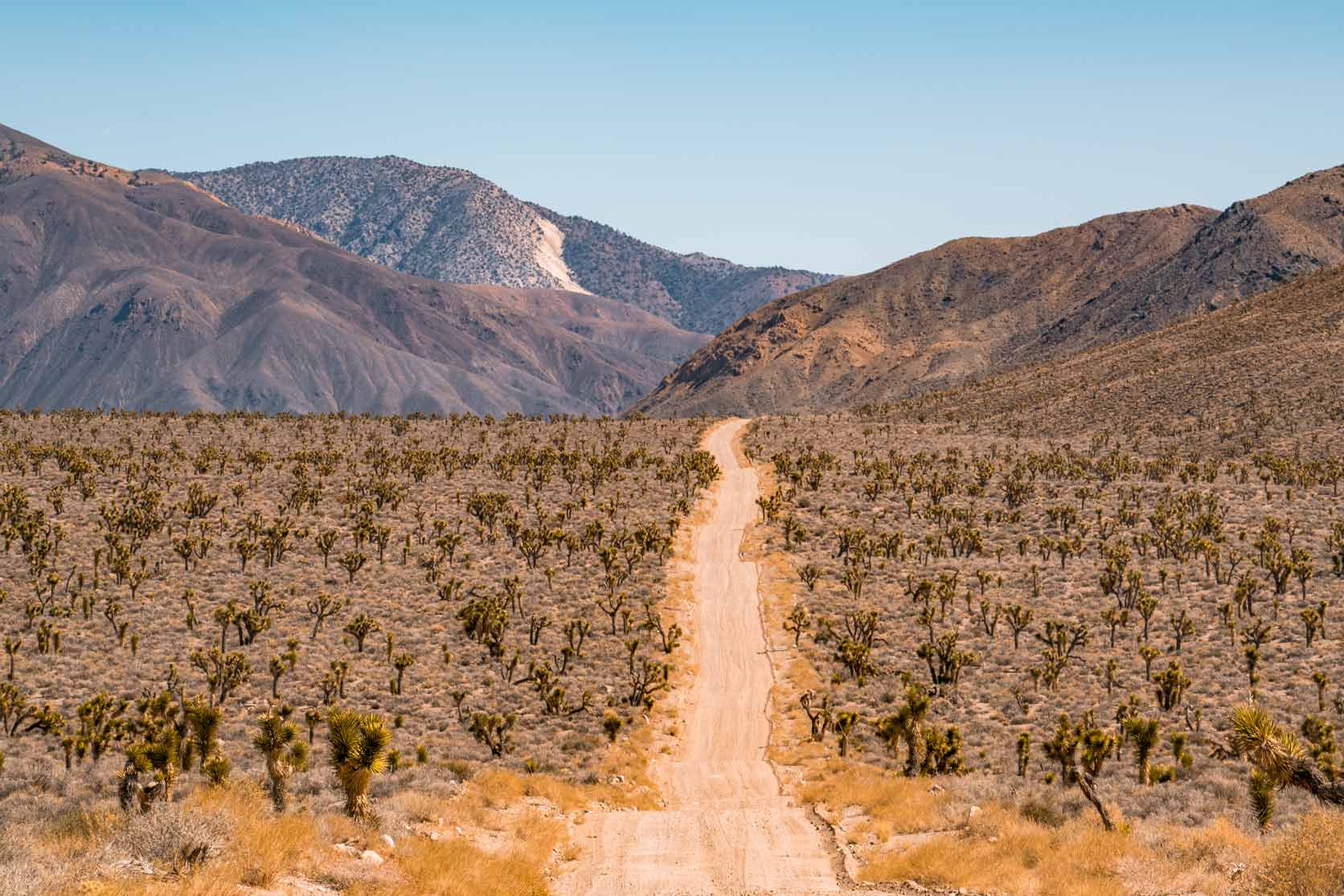
There is currently no public transportation system in Death Valley National Park so getting around the park is totally dependent on your own means of transportation.
There are a number of tour groups that take tour buses through the park if you don’t like driving or don’t have access to a set of wheels. For those who fly in to Las Vegas to access the park, there are buses that do Death Valley tours from there.
The park is massive so getting by on foot alone is really out of the question.
Driving Tips You Should Know in Death Valley
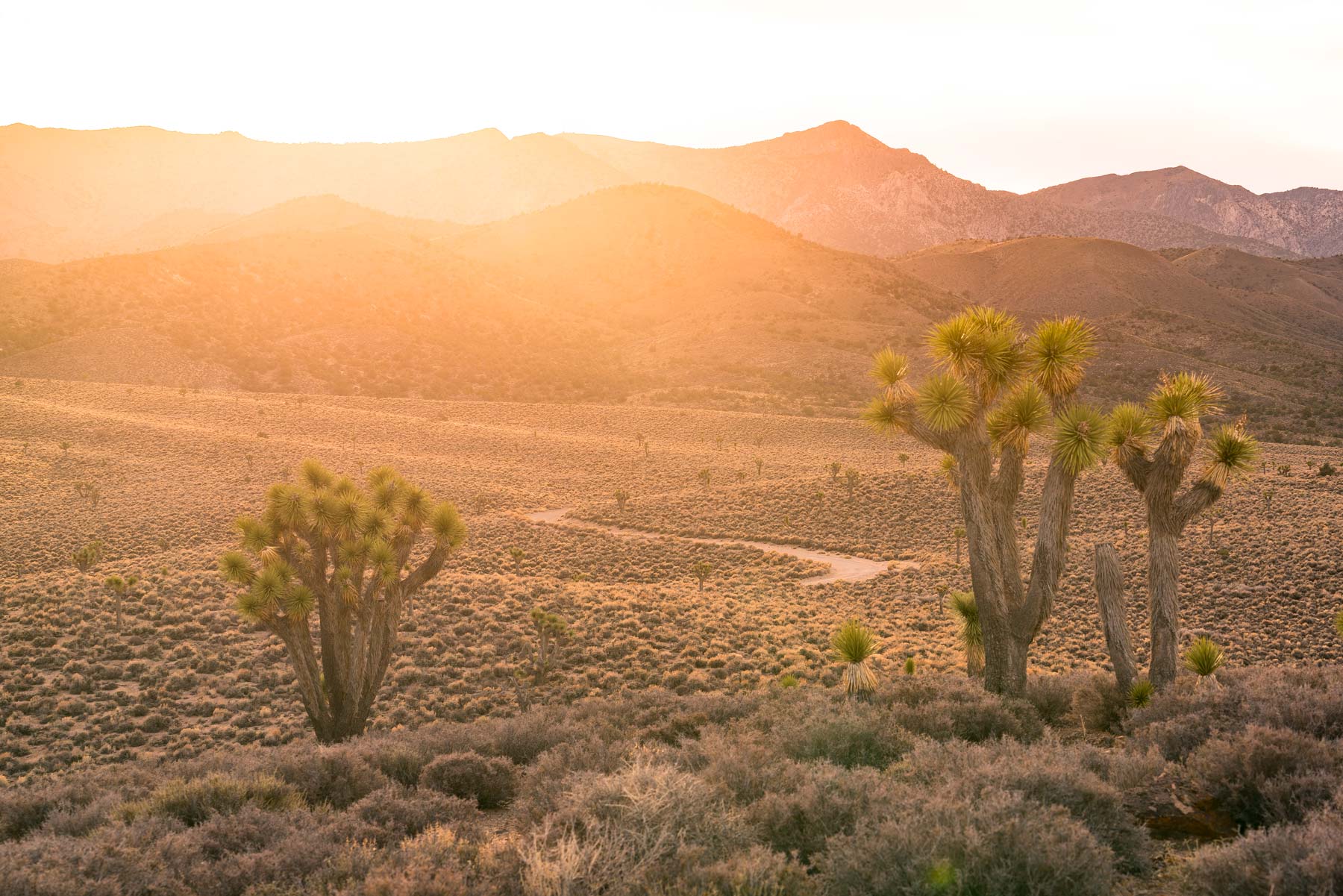
1. Be Prepared For Long Drives
Don’t come into the park without a full tank of gas. Map out stops beforehand and calculate the mileage so that you don’t run out of gas inside the park. Death Valley is not a place you want to be stranded.
2. Bring Emergency Water & Food Just In Case.
Flat tires are common in Death Valley National Park and cell service is spotty at best. While most of the roads are traveled fairly regularly, some are not. This means it could be hours or even days before the next visitor drives down the road.
3. DO NOT DRIVE OFF THE ROADS.
Much damage has been done to the park in the past few years by people driving off road. It takes an extremely long time for sensitive parts of the desert floor to return to a natural state once damaged. If you see someone doing this take down their license plate and report it to a ranger station.
4. Don’t Speed
With wide open roads that stretch for miles and miles the tempation to speed may be great. Resist the urge. You never know when a coyote, hiker, or burro might decide to cross the road. Many of the roads have unexpected dips & sharp turns as well. Enjoy the scenery and take it easy!
5. Driving down dirt roads takes longer.
When calculating your drive times around the park make sure to give yourself a cushion when traversing dirt roads. Google maps doesn’t always do the best job of this and drive times can easily take twice.
Photos
Photos of Death Valley from the production of our film.
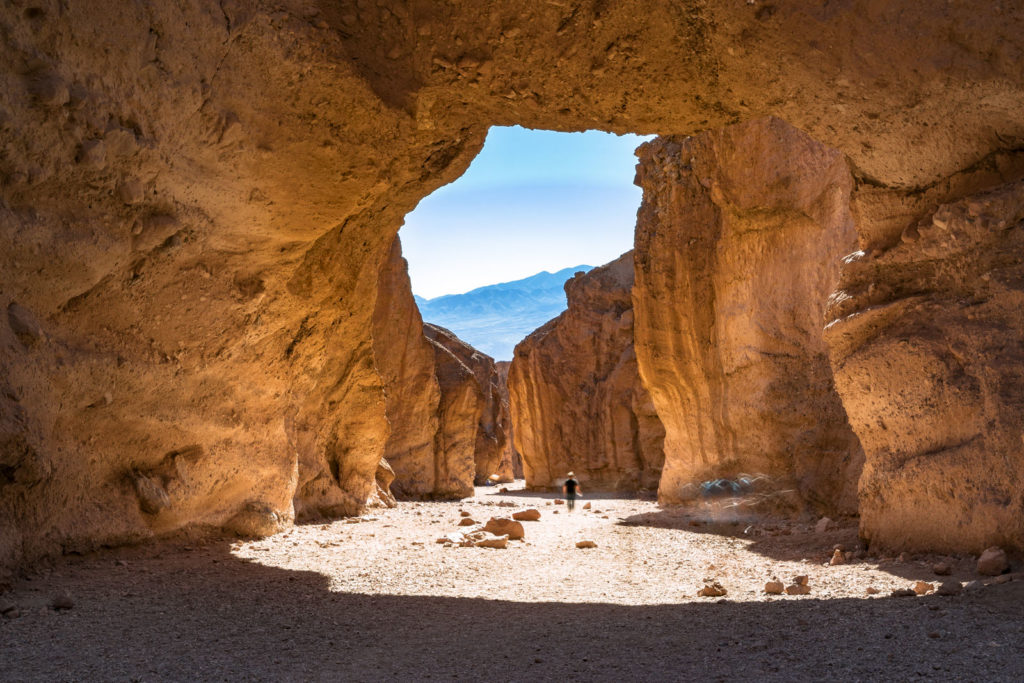
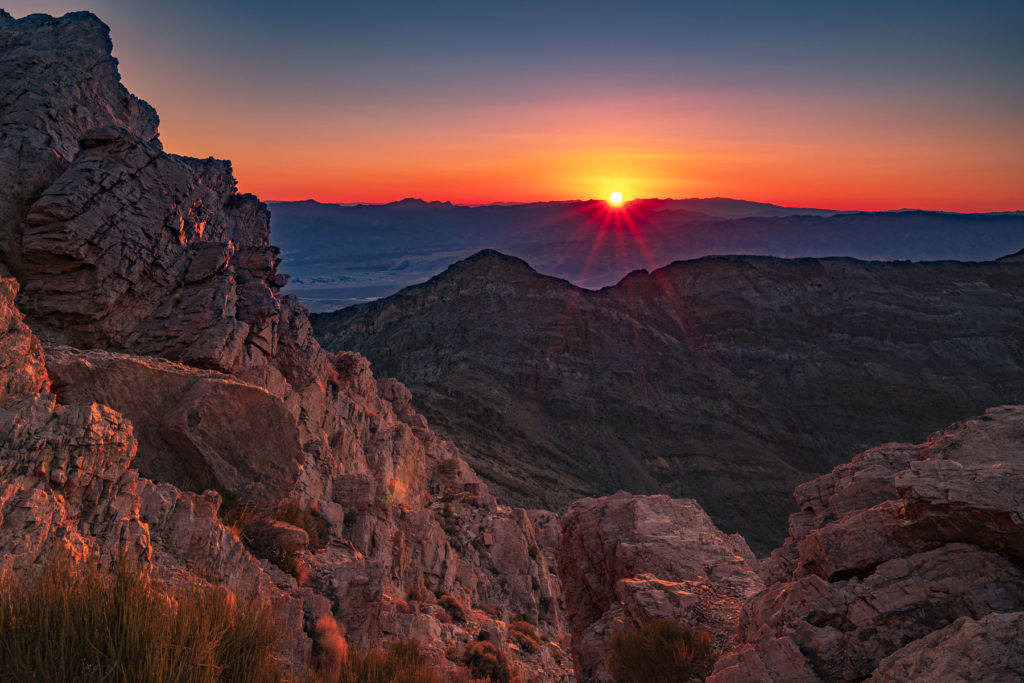

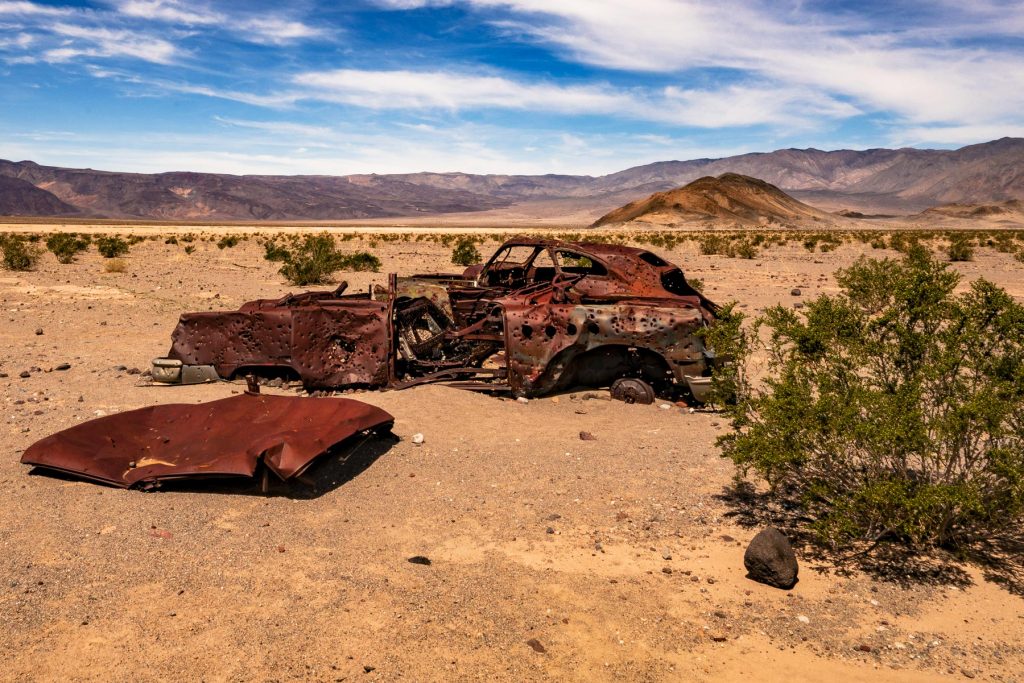
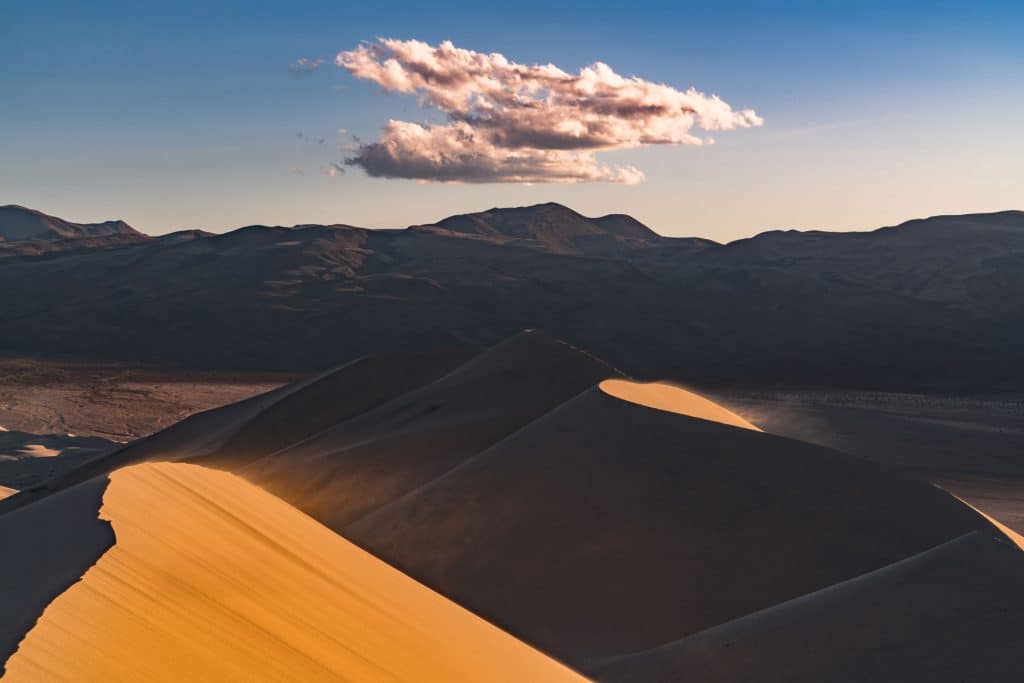
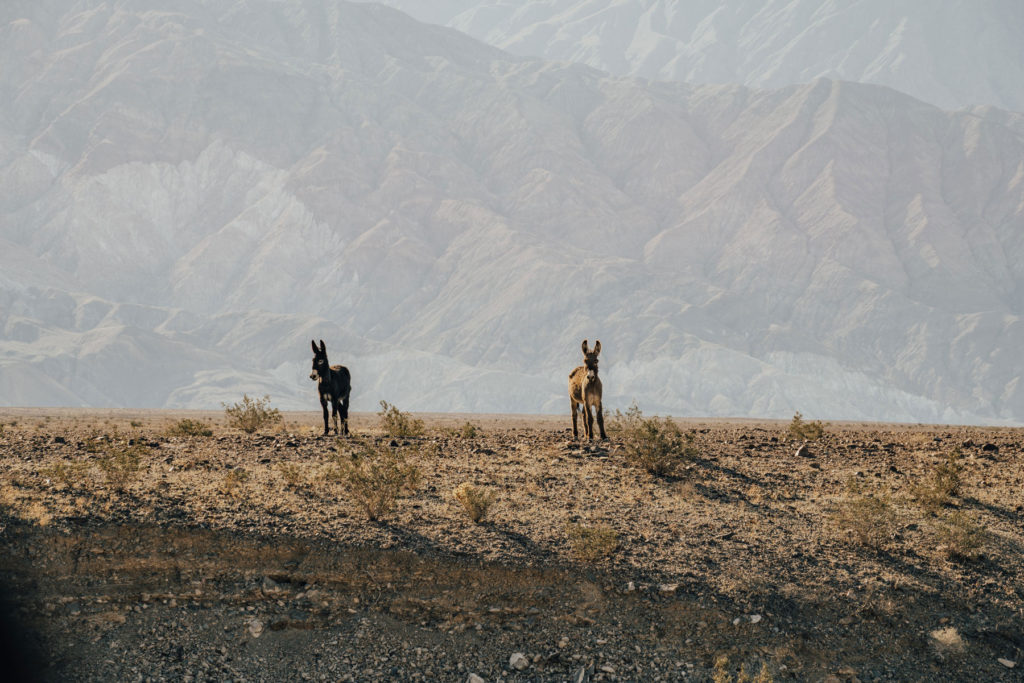
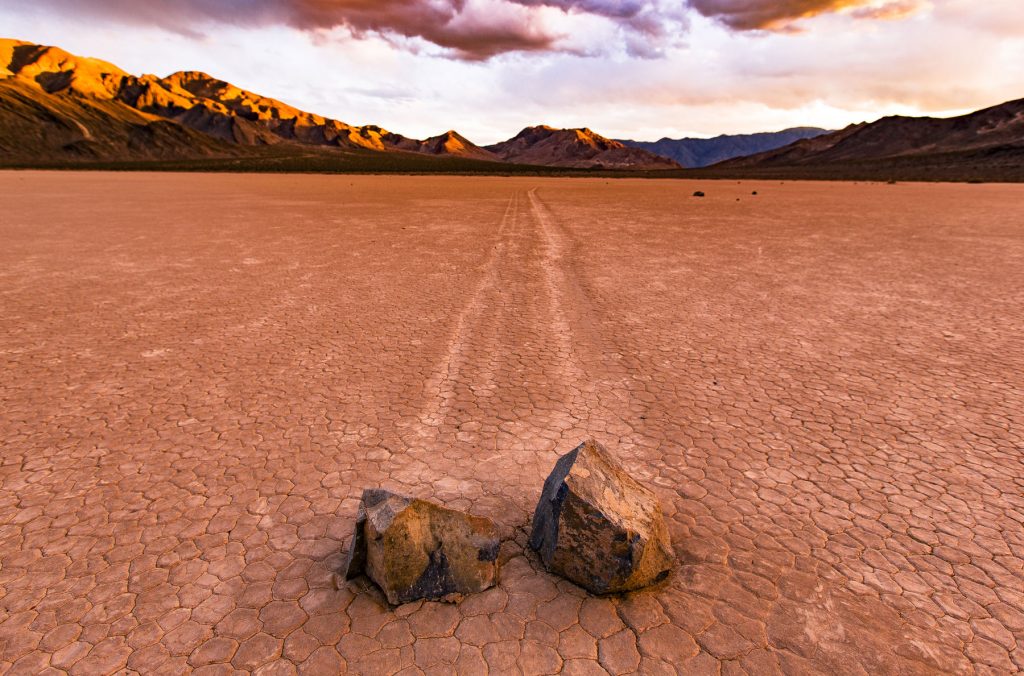
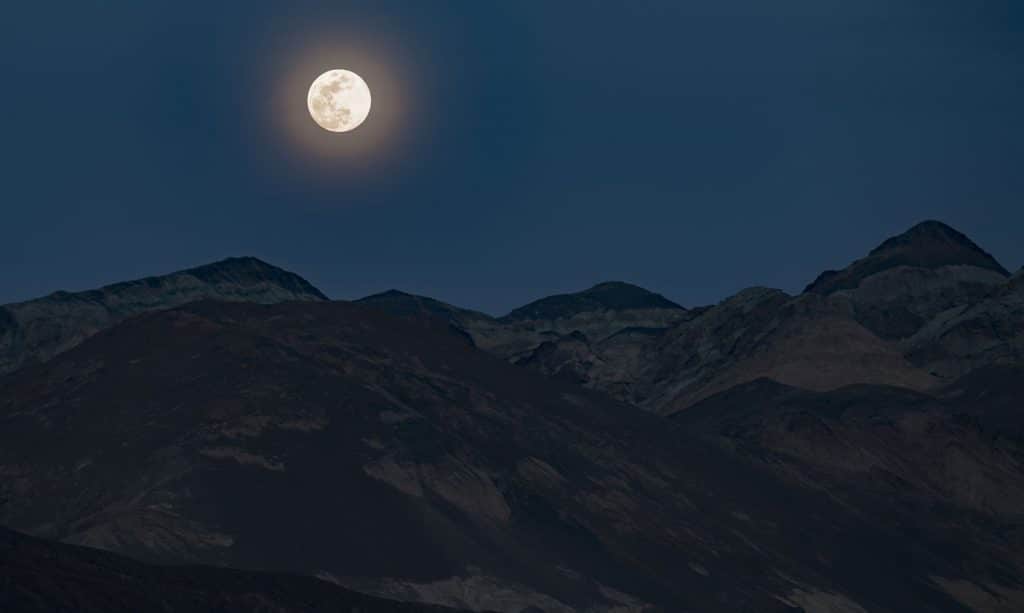
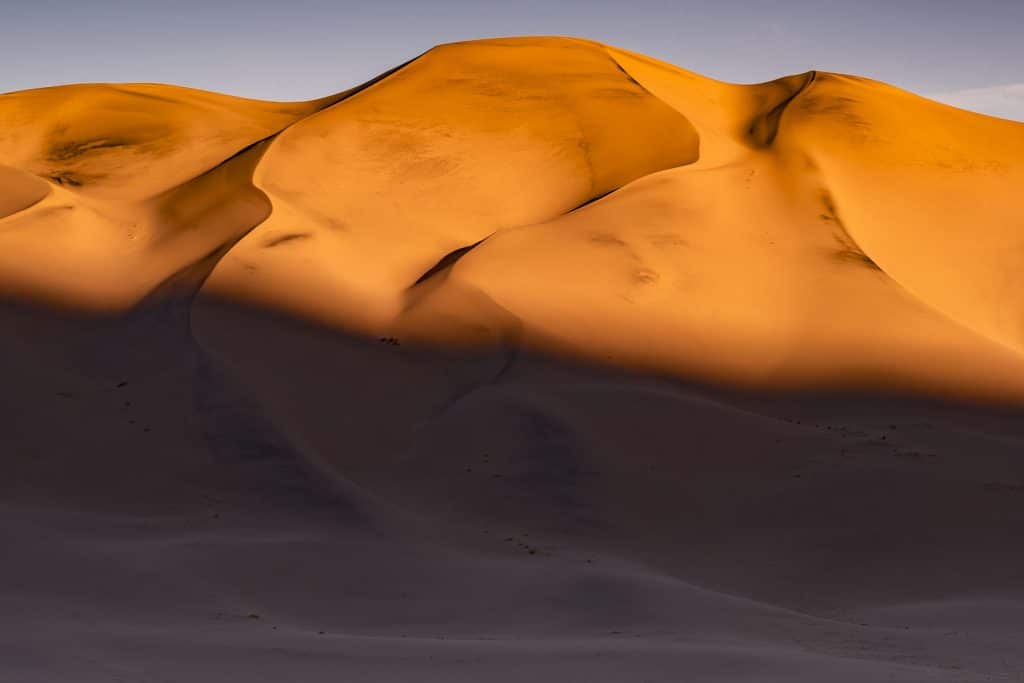
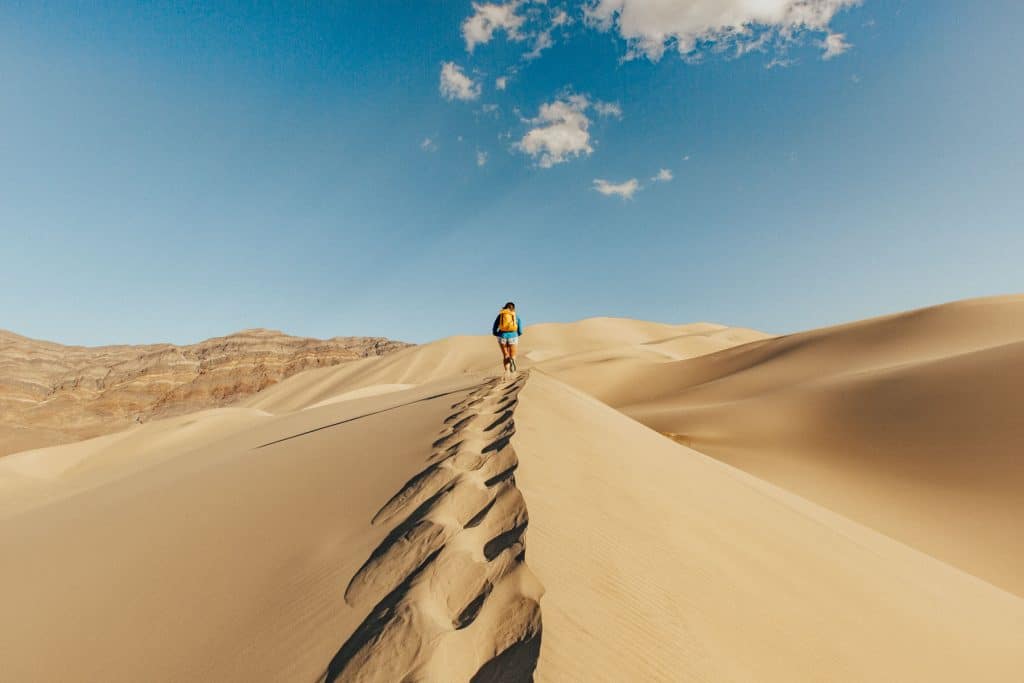

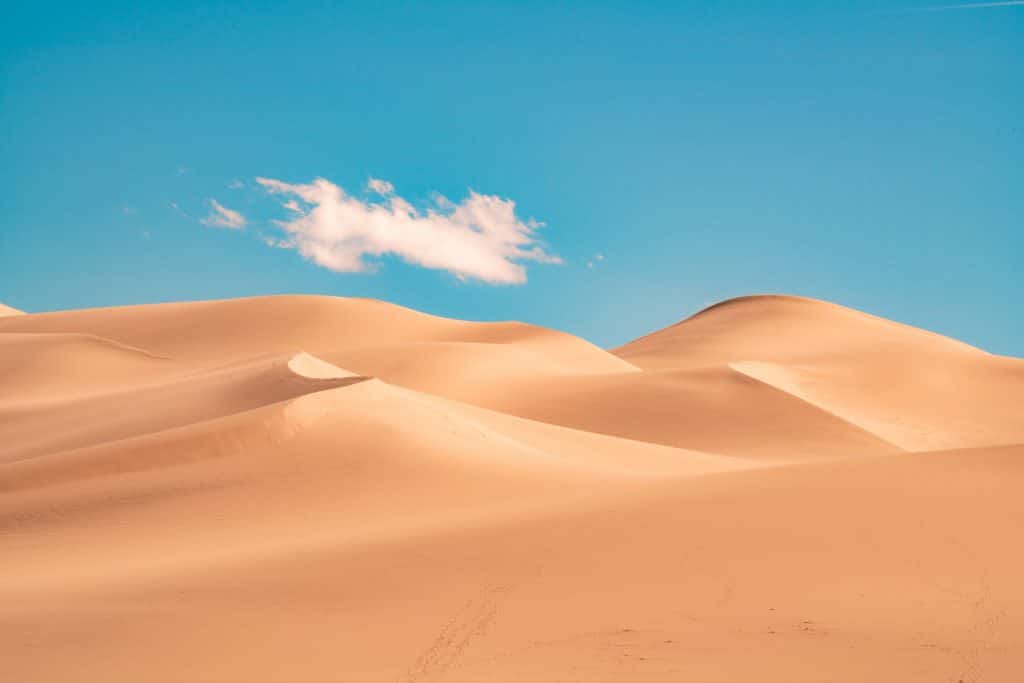
Nearby Attractions
- Joshua Tree National Park
- Zion National Park
- Ash Meadows National Wildlife Refuge
- Grand Canyon National Park
Summary | Leave us a Comment!
That’s a wrap folks! Hopefully you feel like you’ve got a good handle on your next trip to Death Valley National Park. Please leave me a comment below and let me know if you have any questions or comments.
Hope to see you on the trails sometime soon!
Here’s Some Related Post
- Washington’s National Parks are the Best in the World – Complete Guide
- EPIC Guide to All of Alaska’s National Parks
- ALL 63 National Parks Ranked from Best to Worst 2021
- 10 Best National Parks Road Trips in America
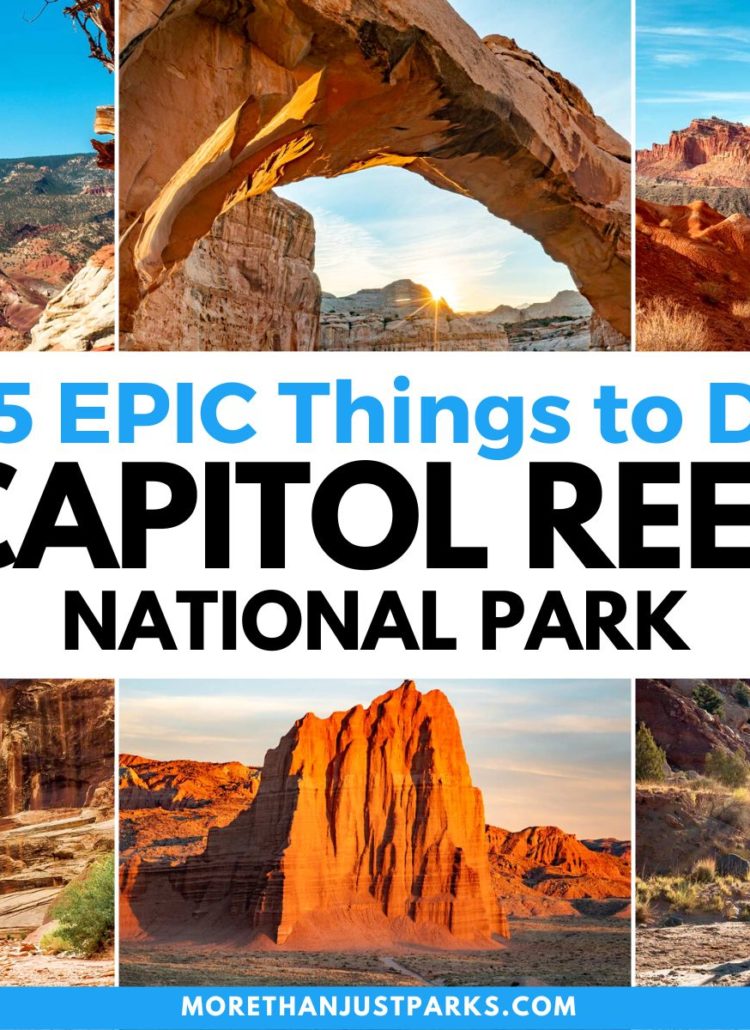

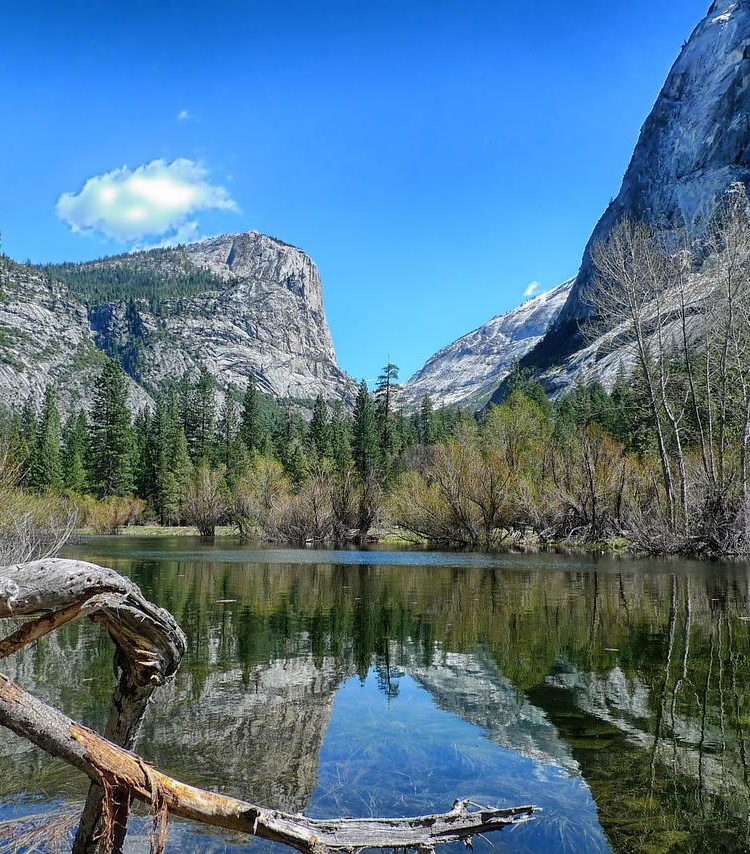
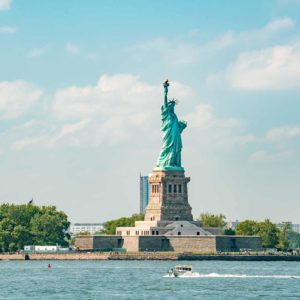

Please note that there is indeed an entrance fee to DVNP.
https://www.nps.gov/deva/planyourvisit/fees-and-passes.htm
Thank you.
Thank you for catching that! Post has been updated to reflect the correct info.
Best,
Will
Thank you very much for this amazing information and video.
Thank you!! 🙂
great place to visit, thank u for creat this article